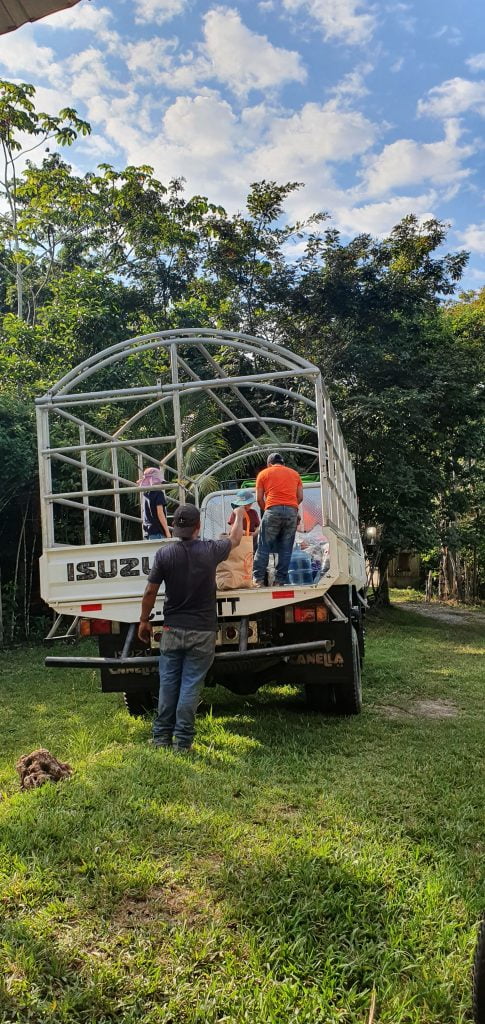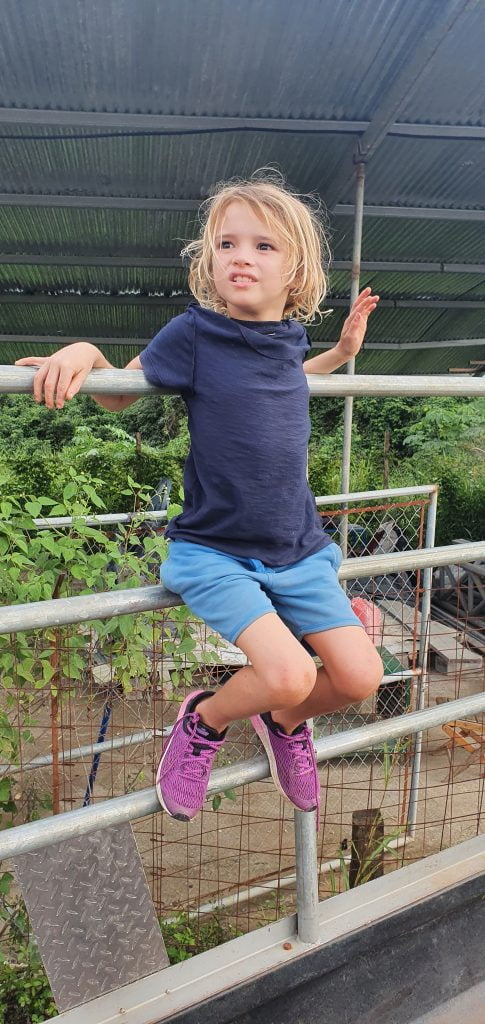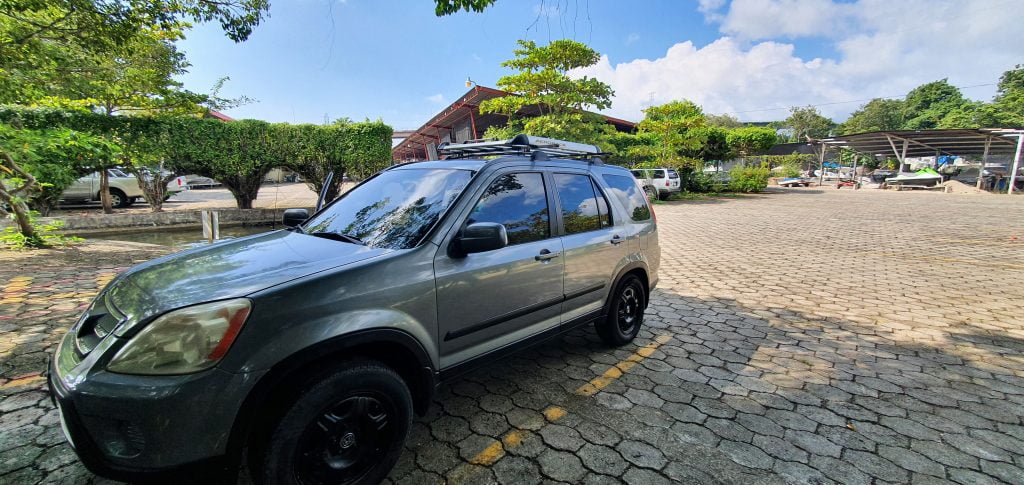We stayed three months in the house at Tijax, so this post is longer than normal, and even more photo-filled!
After searching in vain on the internet for reasonably priced self-catering accomodation in the Rio (AirBnB prices were crazy expensive) whilst work started on Huimpback, we contacted Tijax Marina and were offered a choice between a cabin by the pool/restaurant/marina area, or for the same price, the house located by the farm/plantation/owner’s house. We opted for the farm house, and weren’t disappointed! Even better, with the house was included access to the pool at Tijax Marina, as well as to the wonderful trails through the rainforest and planation.
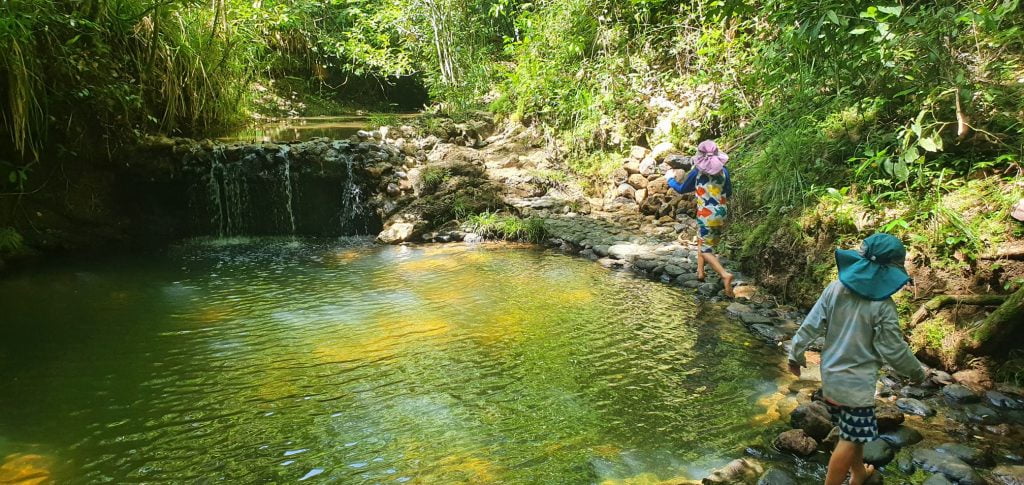
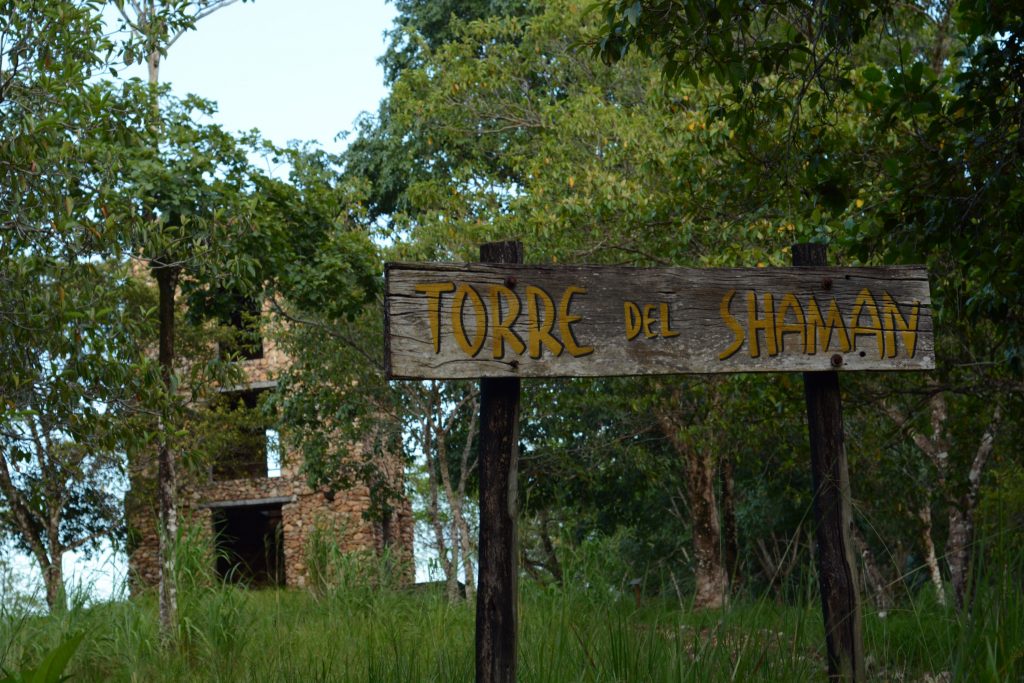
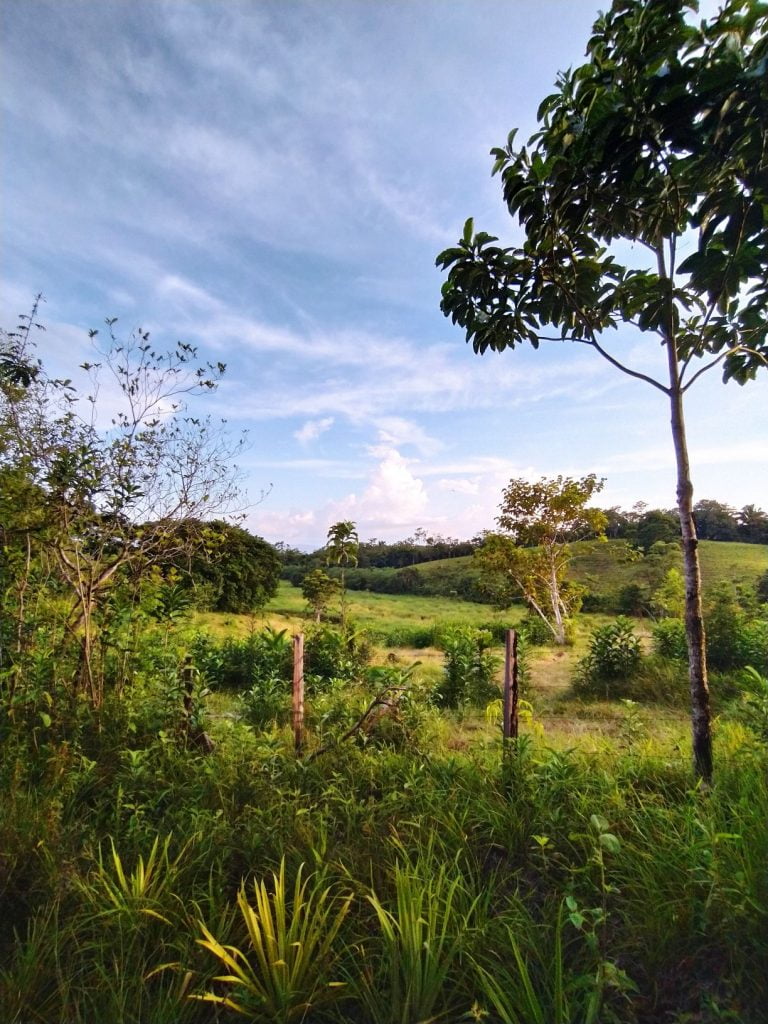
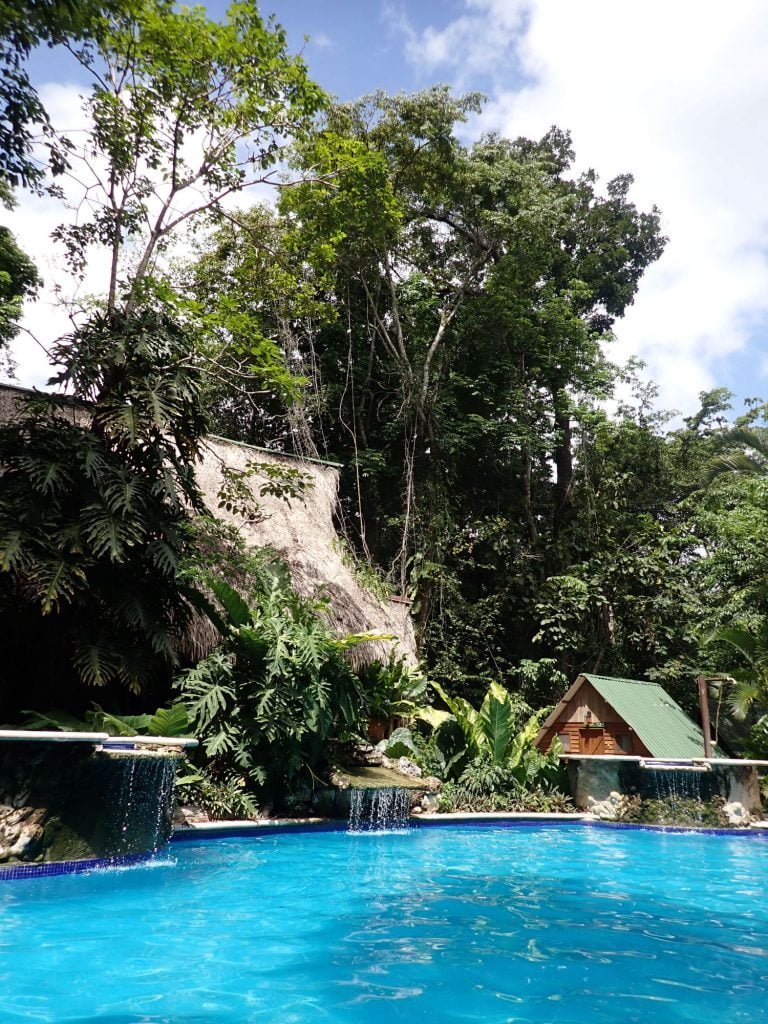
Tijax is comprised of a marina, hotel and restaurant, as well as marked trails, canopy walk, small museum, natural pool and look-out tower, situated within more than 400 acres of nature reserve and forestry sites. The owner explained to us how, when he first started the process of developing the site, much had been deforested for firewood for cooking (many Guatemalans use open fires for cooking all their meals; sometimes these are situated in the family home), and it took years simply to secure the boundaries to protect the plant and tree life. And the animal life- small native mammals were also sought after for food, to the detriment of the local ecosystem. Where much the area surrounding the river has been ‘landscaped’ to provide beautiful and neat marinas, or developed for commercial purposes, through the hard work and commitment of Eugenio and his team, areas of primary and secondary rainforest now fall under protection at Tijax, with strict limits on what can or cannot be altered, removed or otherwise tampered with. The other areas of the site include teak and rubber plantations, and a newer venture in growing cocoa. It is a popular destination for bird watching and nature photography, with sightings of species native to tropical rainforest, as well as river and migratory birds.
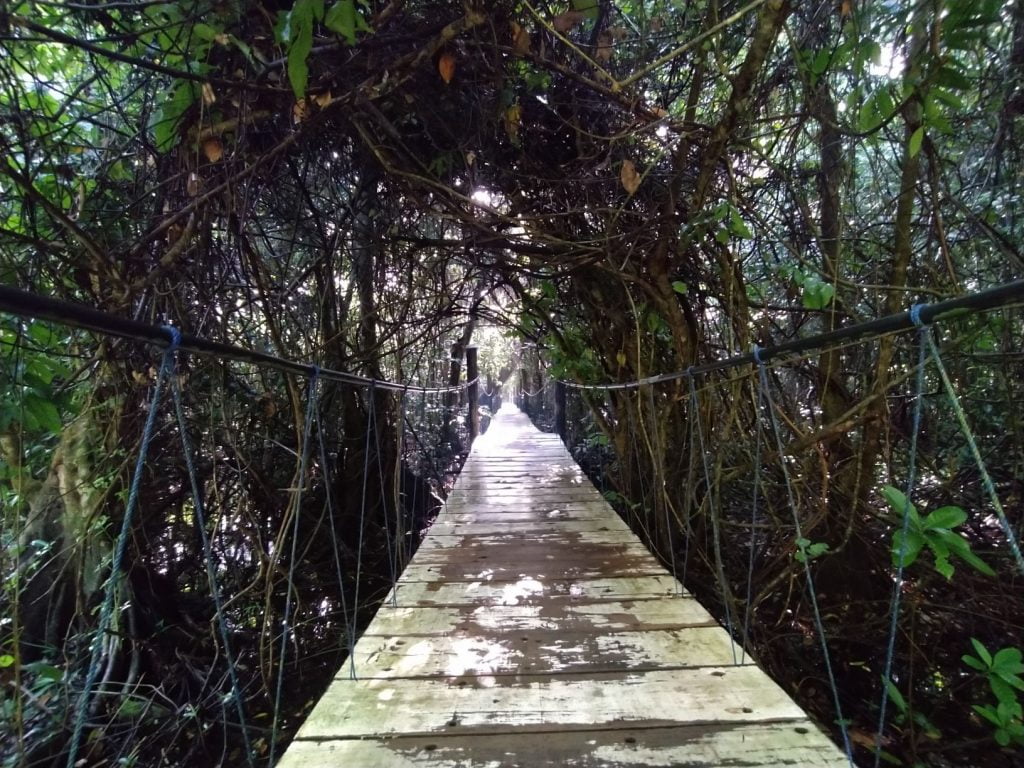

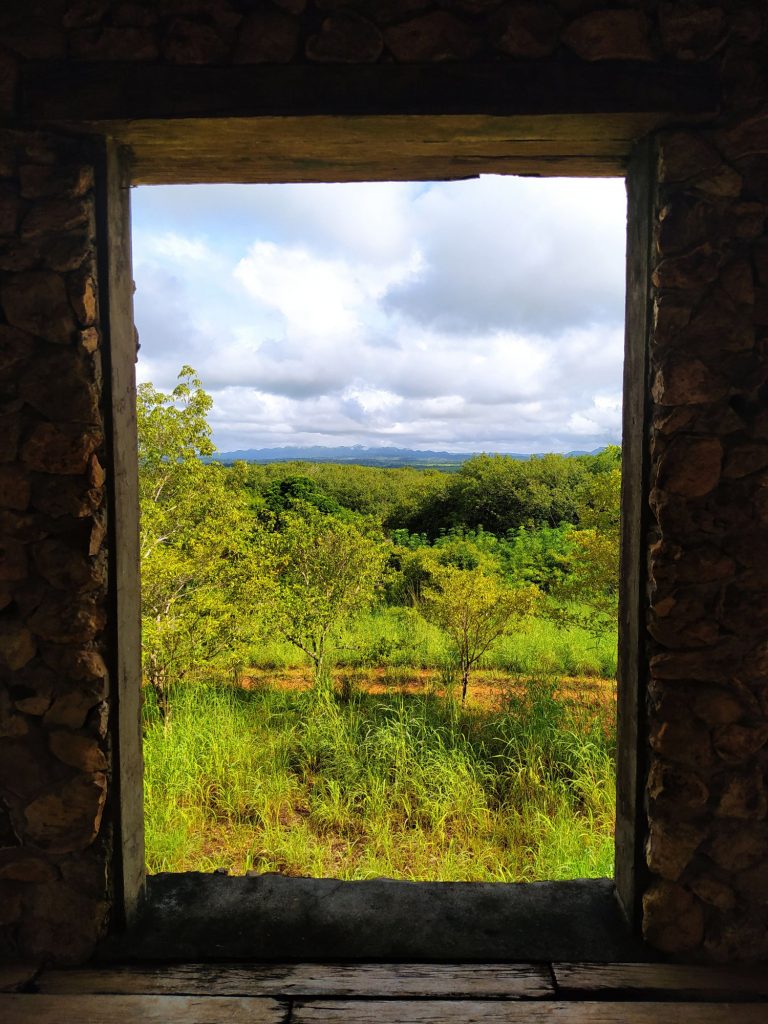
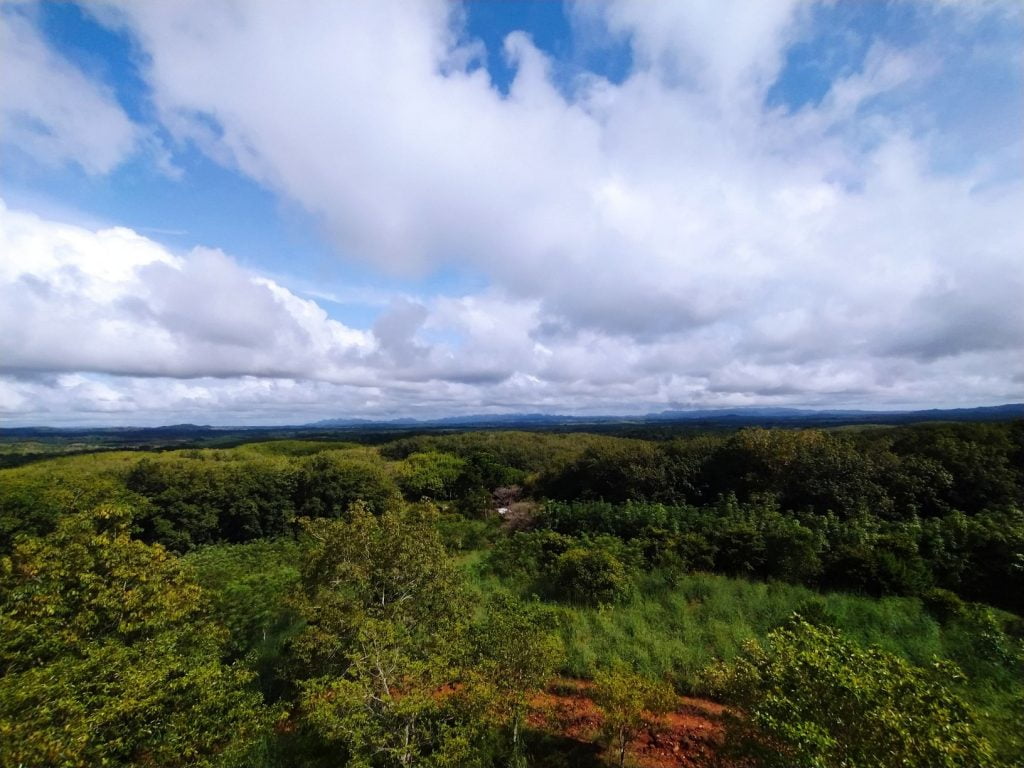
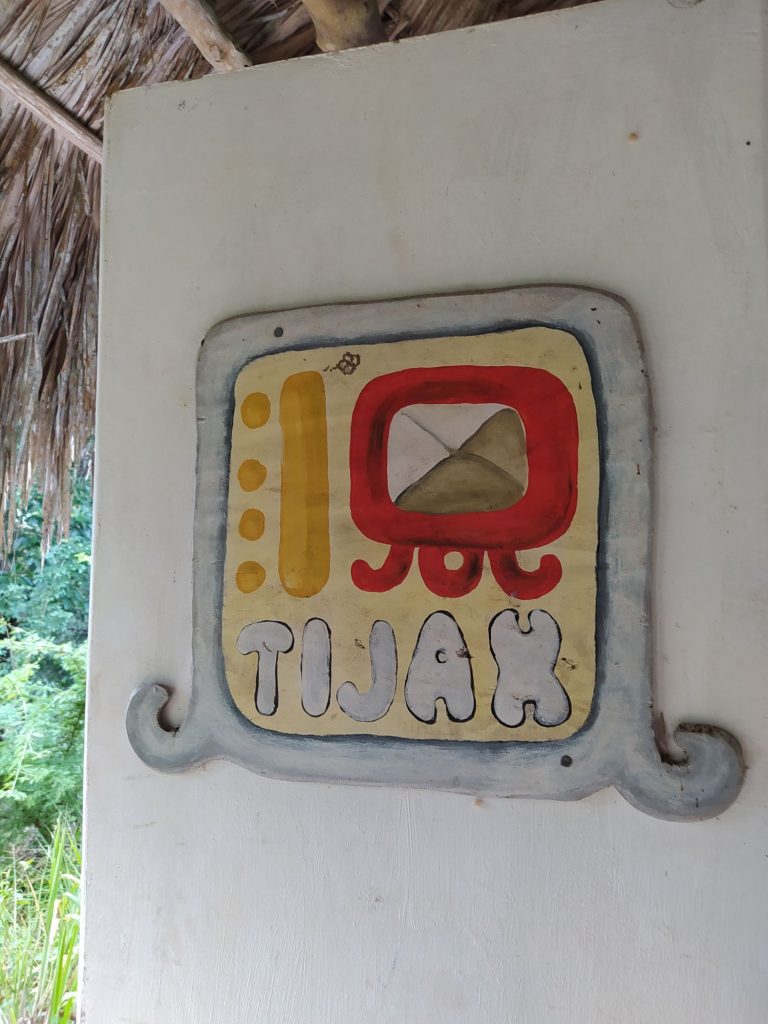

The house we rented had a large open-planned kitchen/lounge area and shower room, downstairs, and 2 bedrooms and another shower room upstairs, and was surrounded on 2 sides by a shaded veranda, invaluable given the high temperatures, strong sun and torrential rain experienced throughout hurricane season. Certainly a huge change from the space we have onboard! We got our first experience of a pila here- two or three large concrete (or sometimes plastic) sinks outside the house used for laundry. Many of the houses we have stayed in and seen in Guatemala have pilas, or else the residents use communal washing facilities. Home automatic washing machines seem to be pretty rare. Since we hand-washed laundry, including cloth nappies, for our first couple of years onboard, this was no hardship, although the heavy rain meant getting things dry could take days.
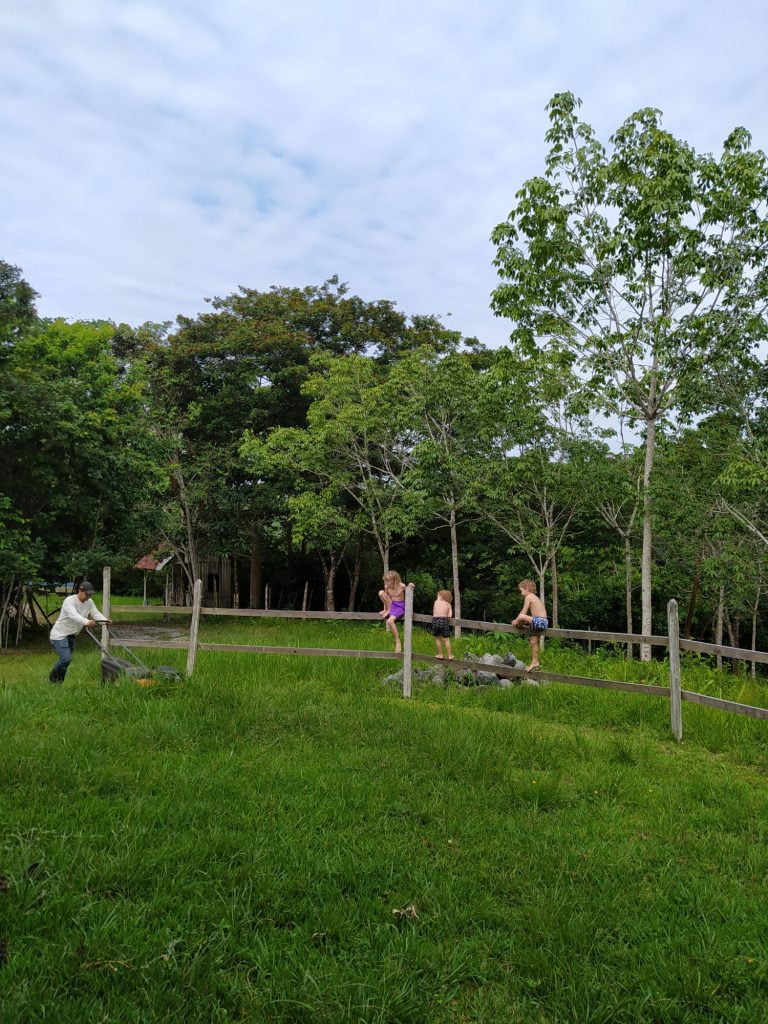
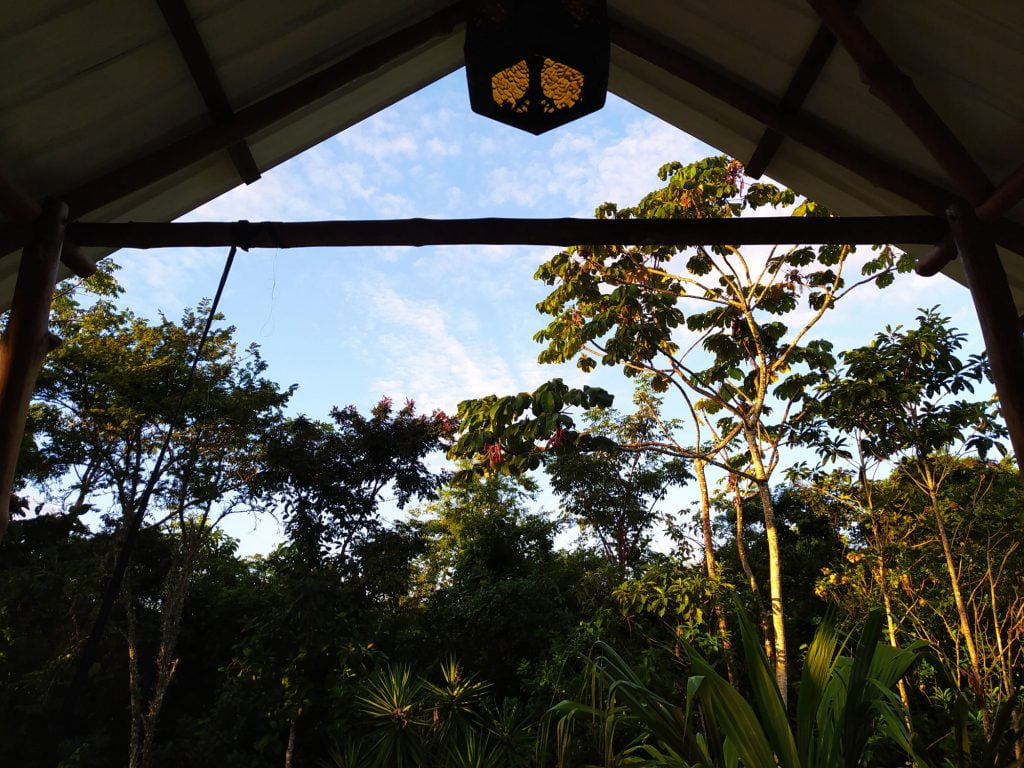
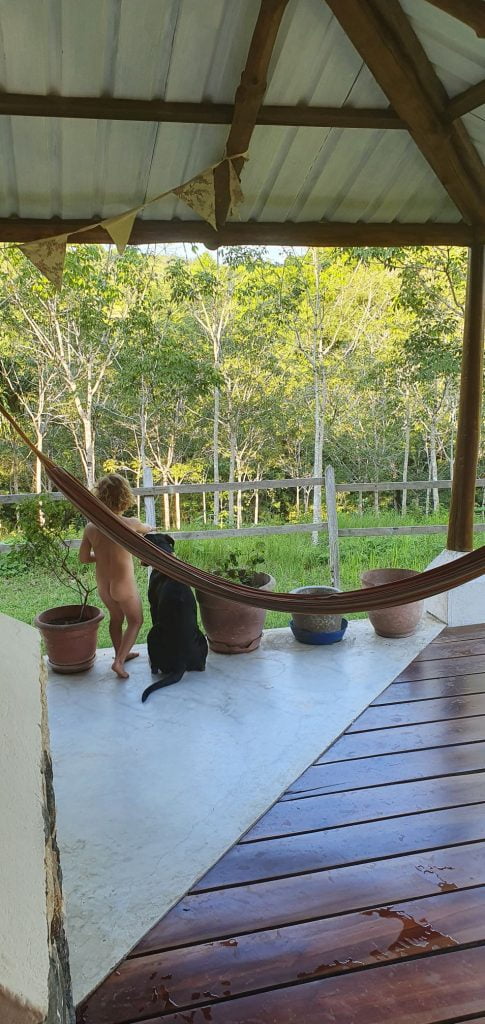
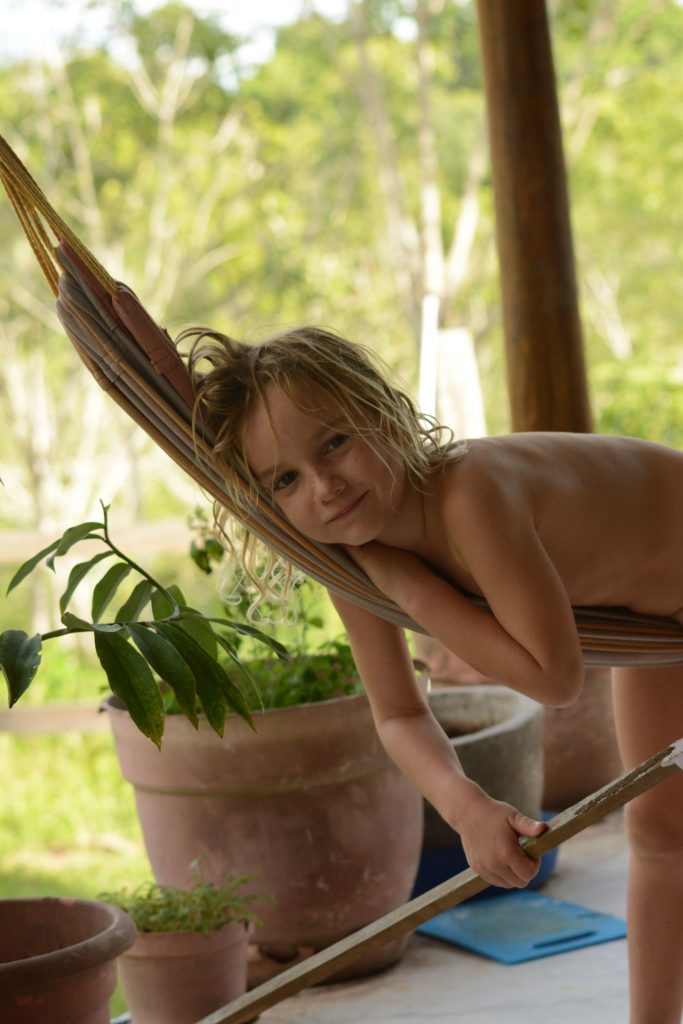
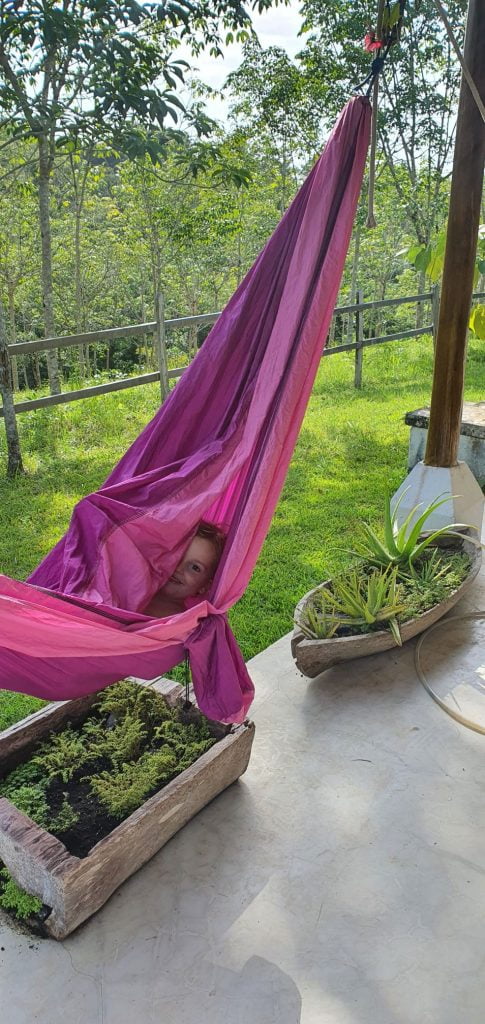
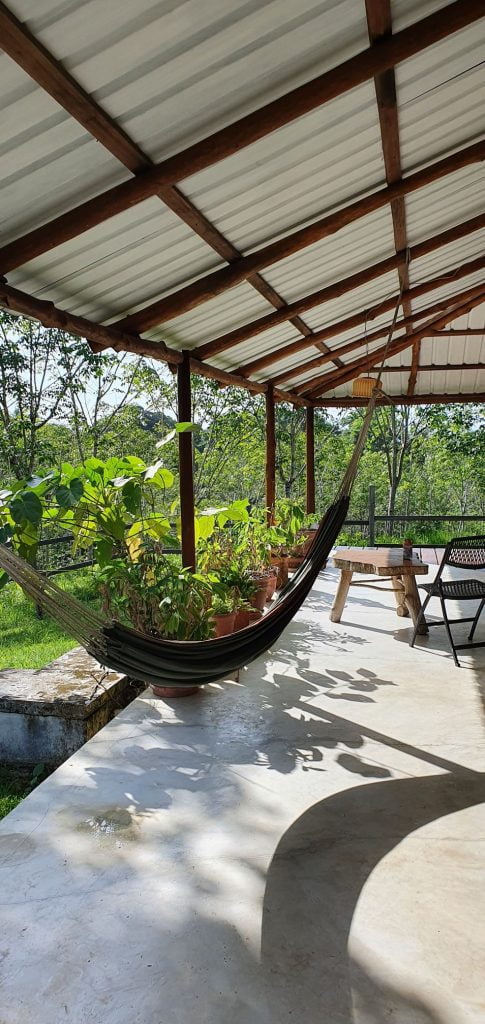

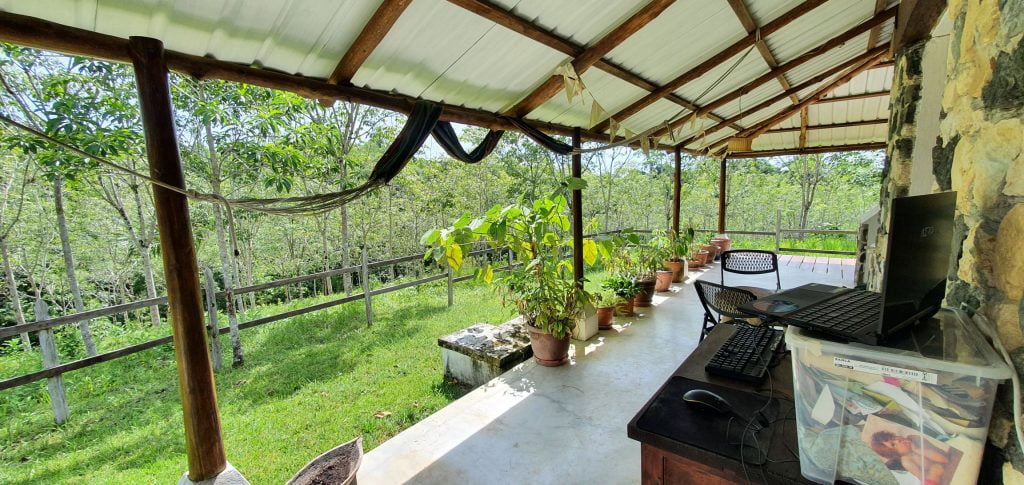
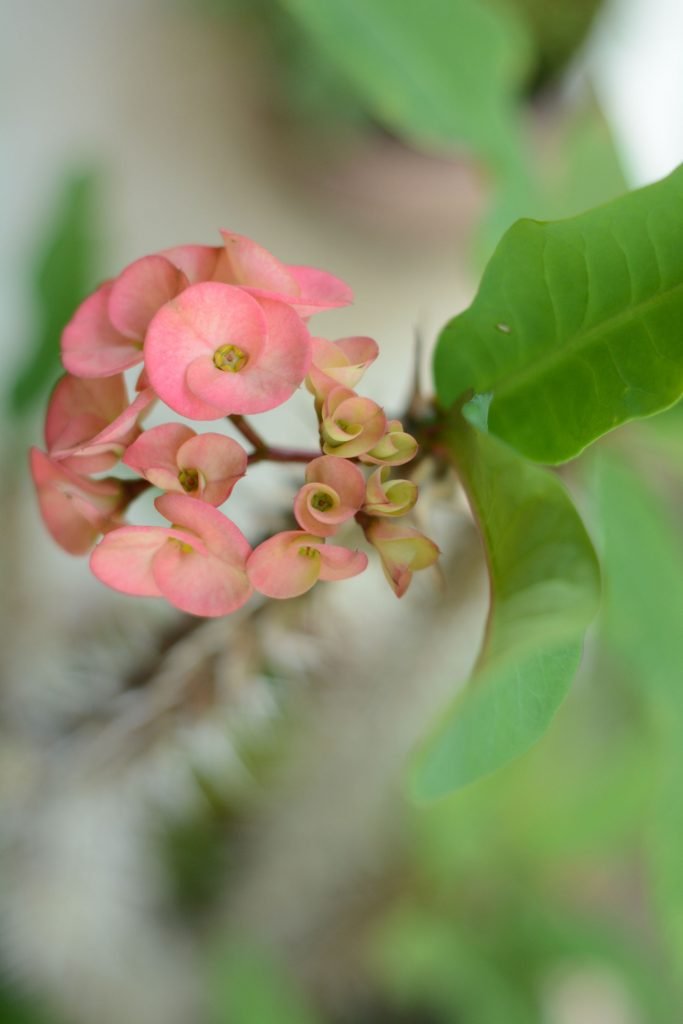
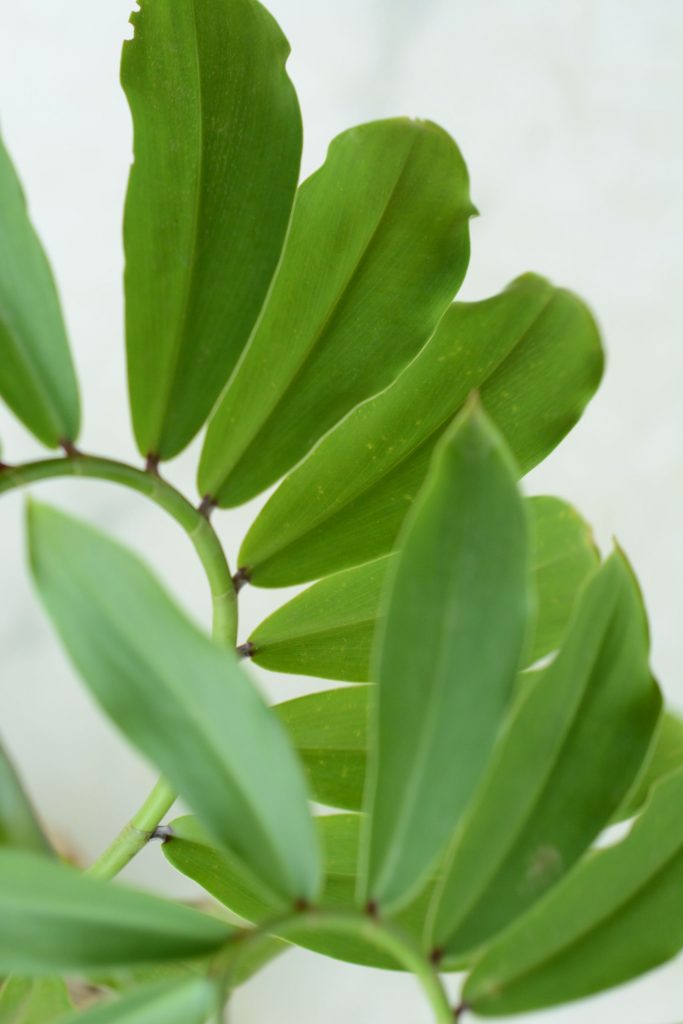

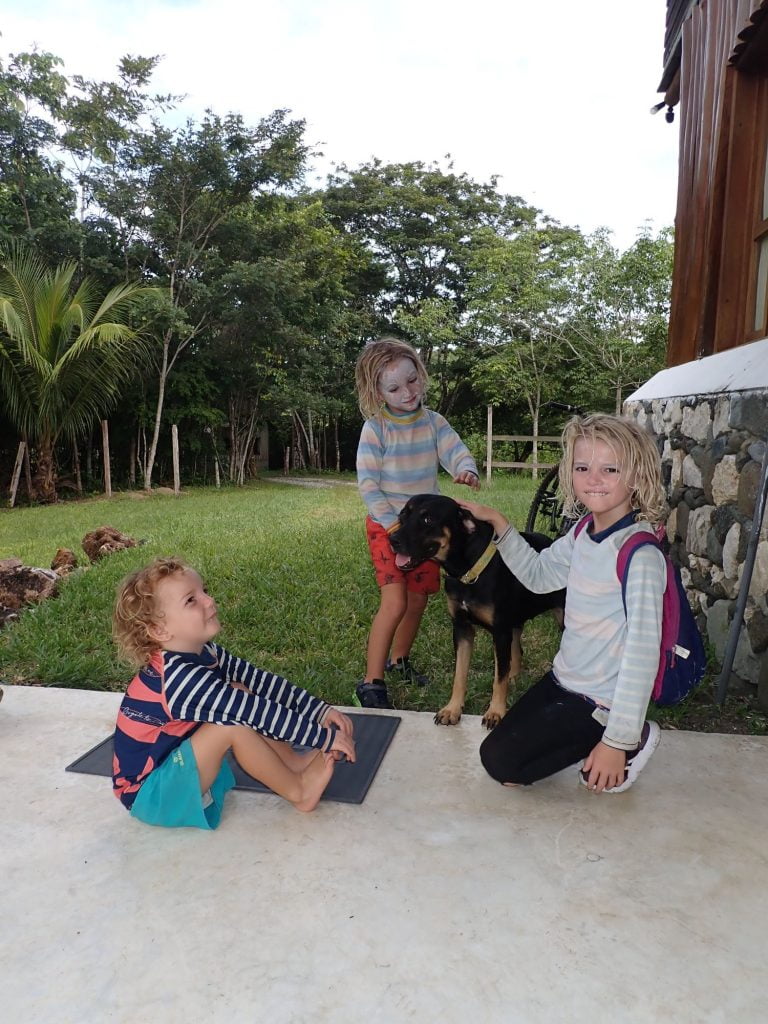
We had an amazing three months in the Tijax house, which is situated central to the plantation and rainforest trails. As soon as you enter the rainforest, the normally ever-present noise of cars and braking lorries from the town and bridge is deadened, and you are surrounded by the sounds of bird calls, leaves falling and chattering insects. We were lucky that Eugenio, the owner, took us on a tour of the rainforest and farm plantation in our first week, part on foot and part in his ATV, so we knew a little about some of the plants and features we saw: trees felled by lightning; the species that ‘bleeds’ red when carved; another whose cork-like bark peels off in pieces; the all-spice tree with leaves you can grind for tea. The canopy bridges are amazing, walking through the tops of the trees and looking down on 30ft long palm branches, though Arthur got a scare when he slipped on some wet leaves and almost went down a gap at the side. One of our favourite things to look out for were the ever-changing leaf-cutter ant routes, trodden down by so many feet that clear tracks were worn through the undergrowth and leaf-litter.
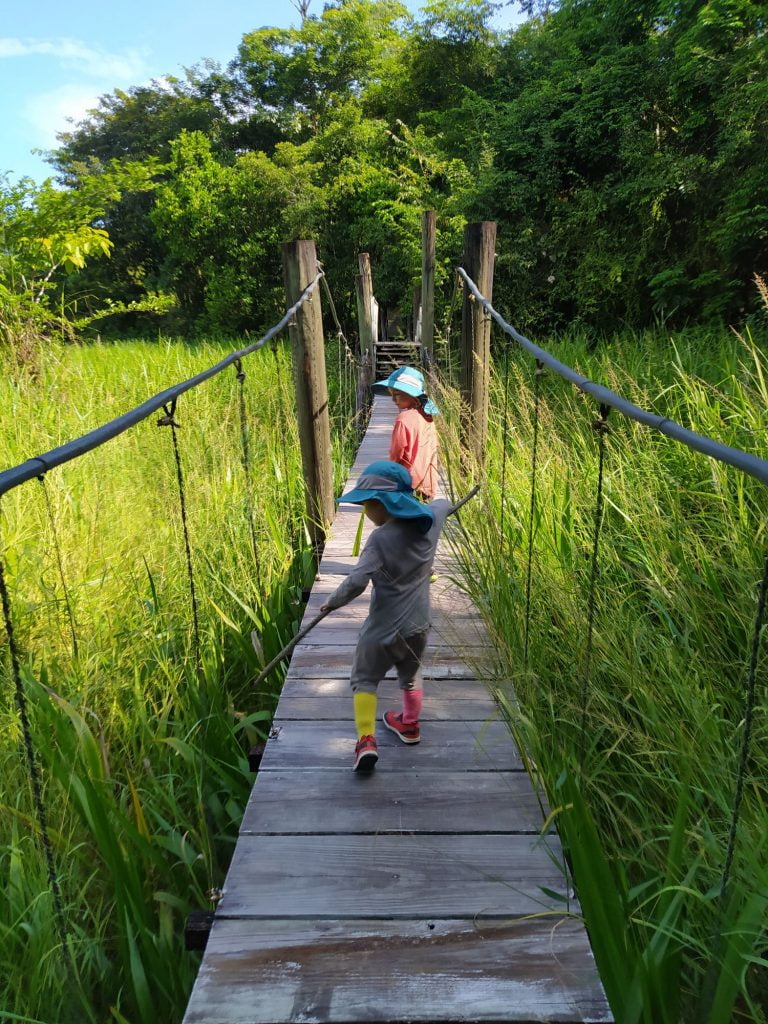
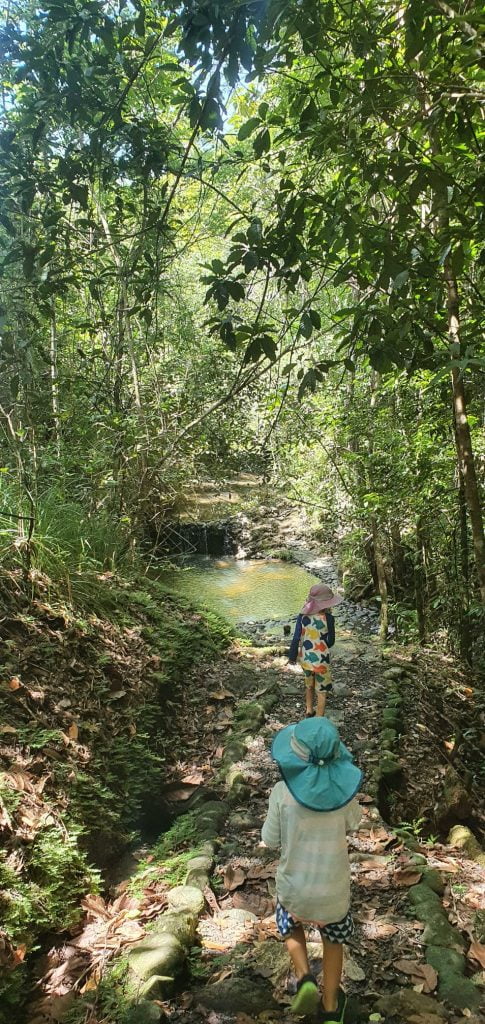
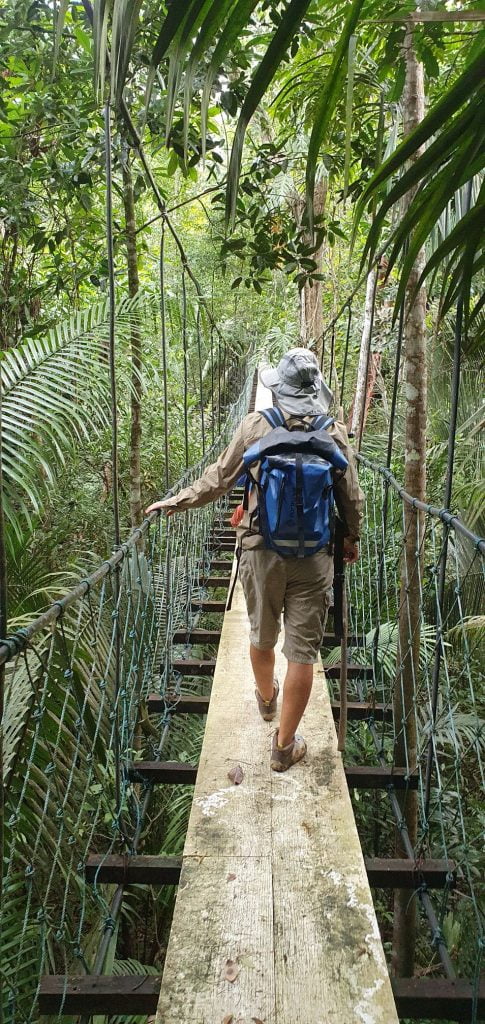

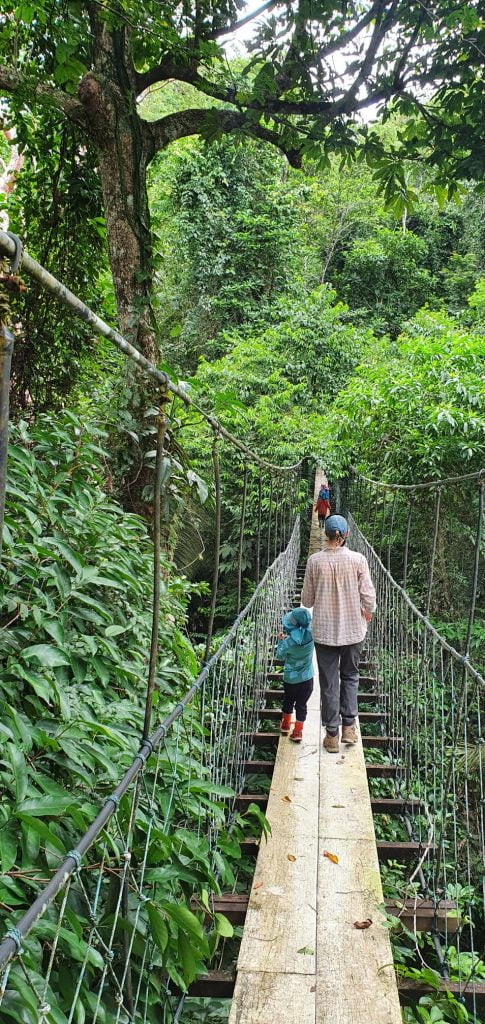
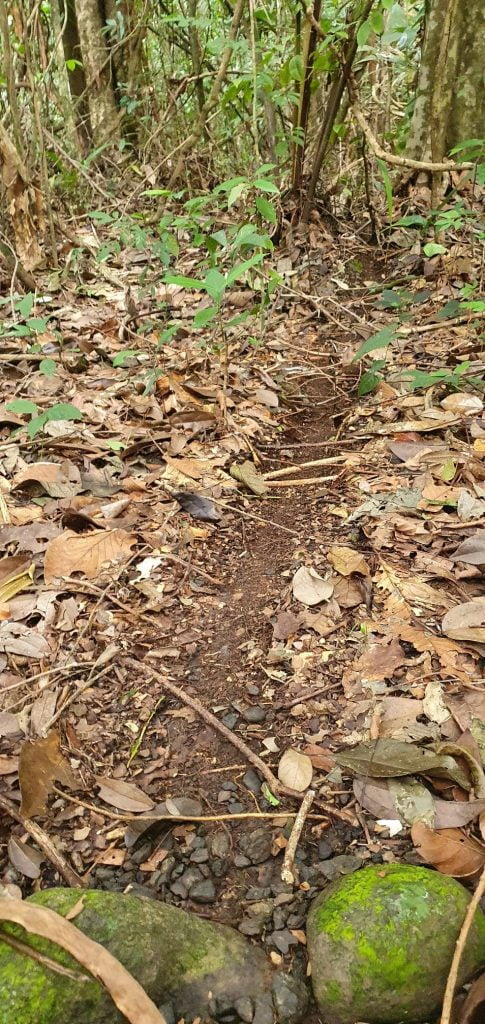
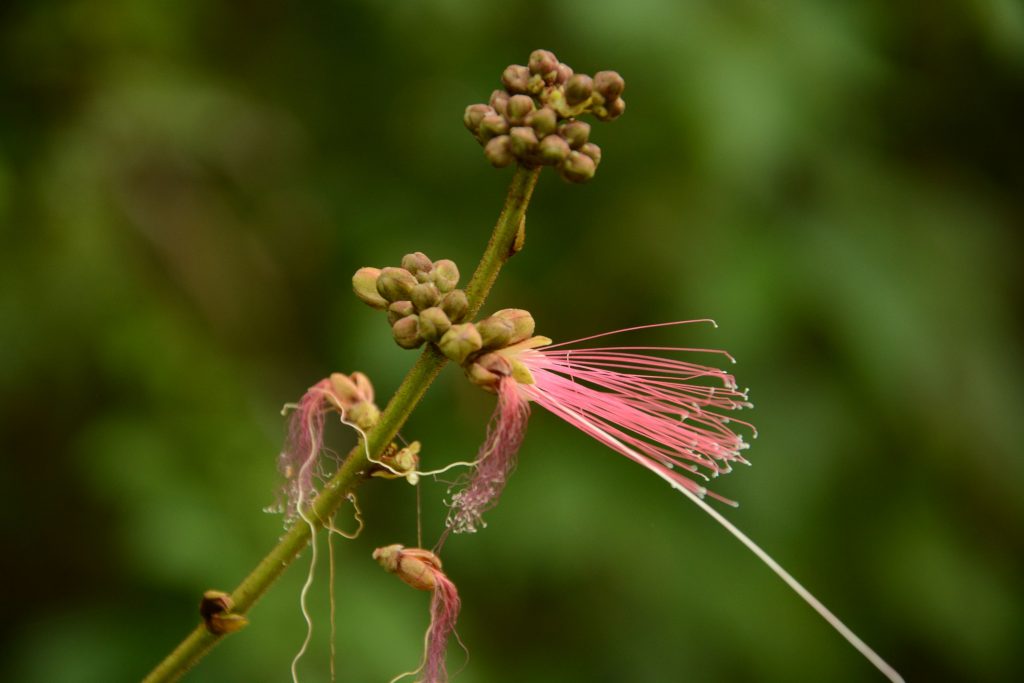
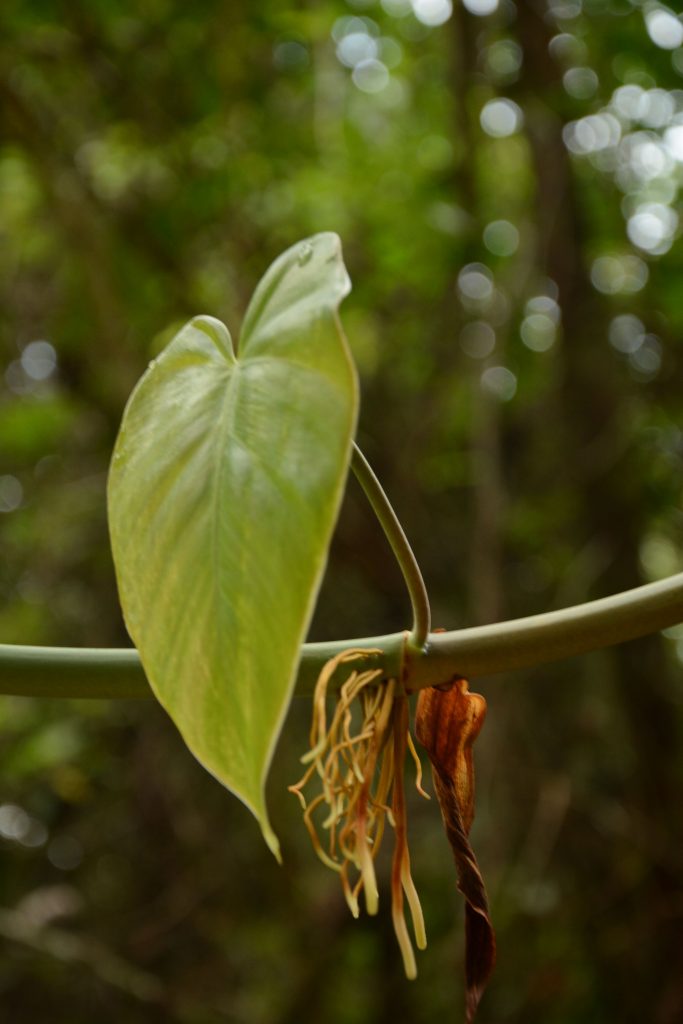
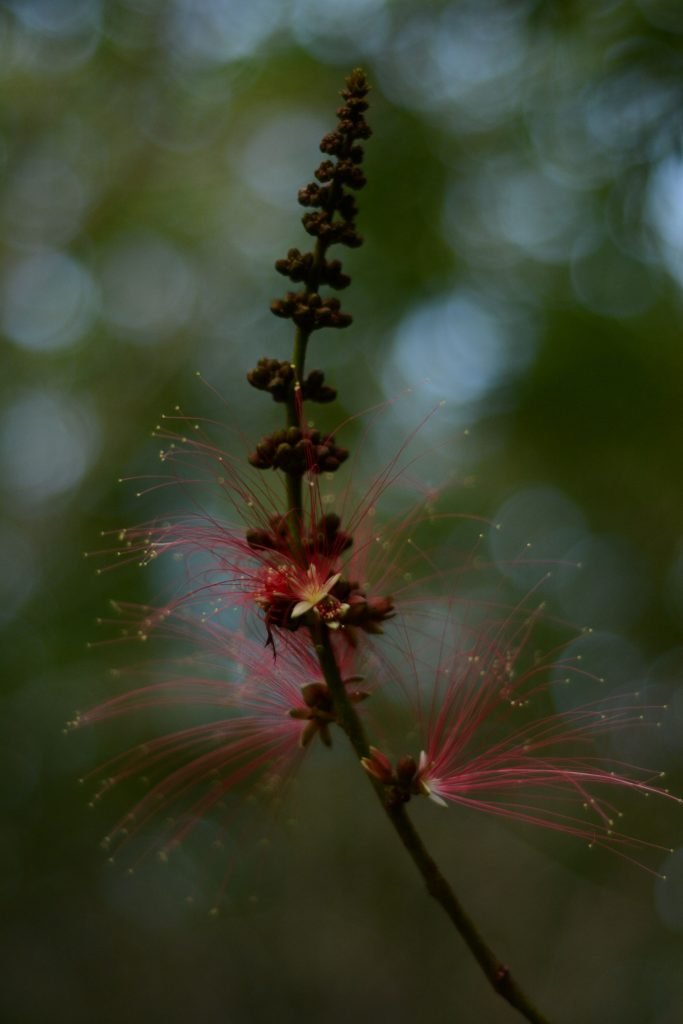
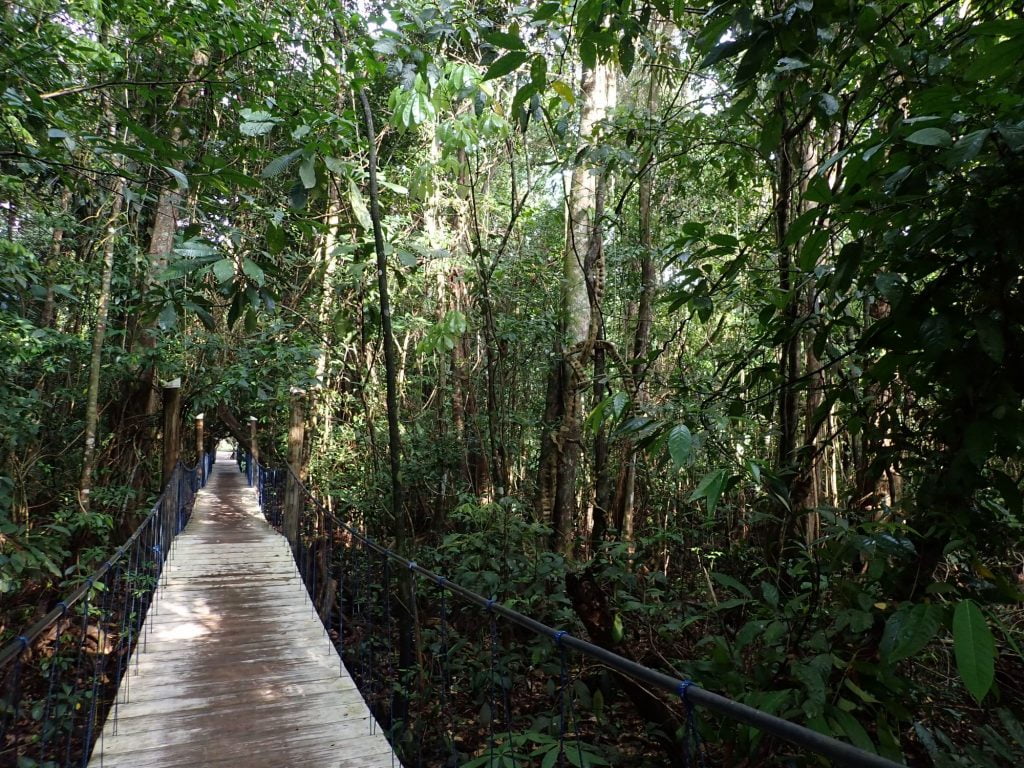
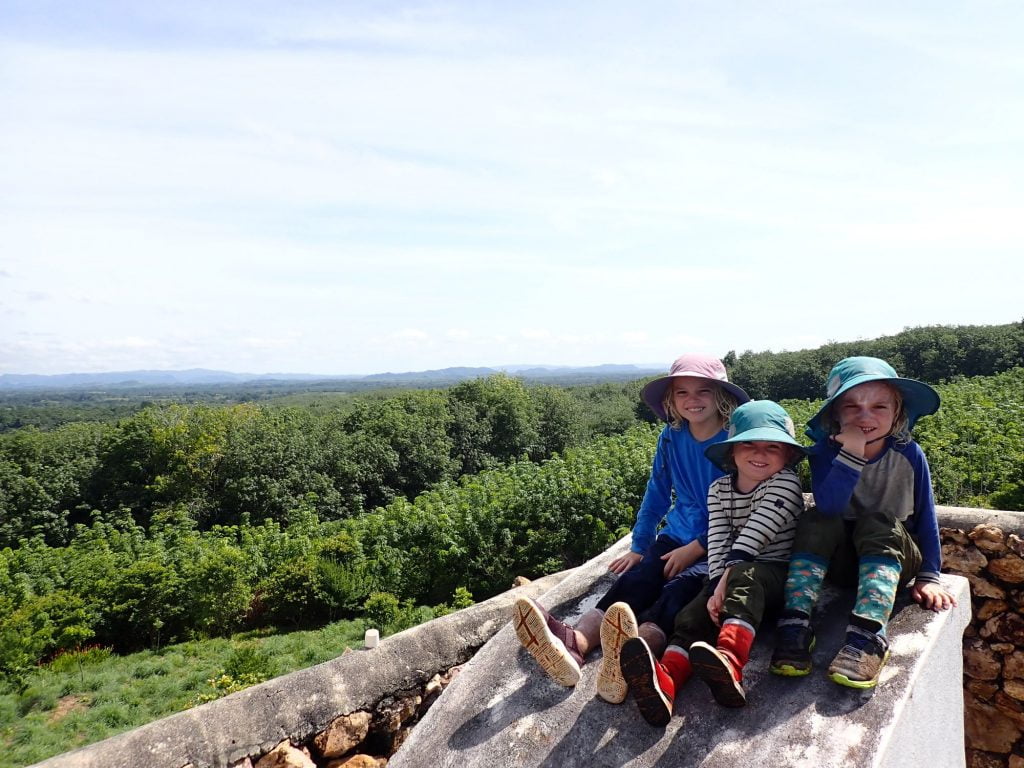
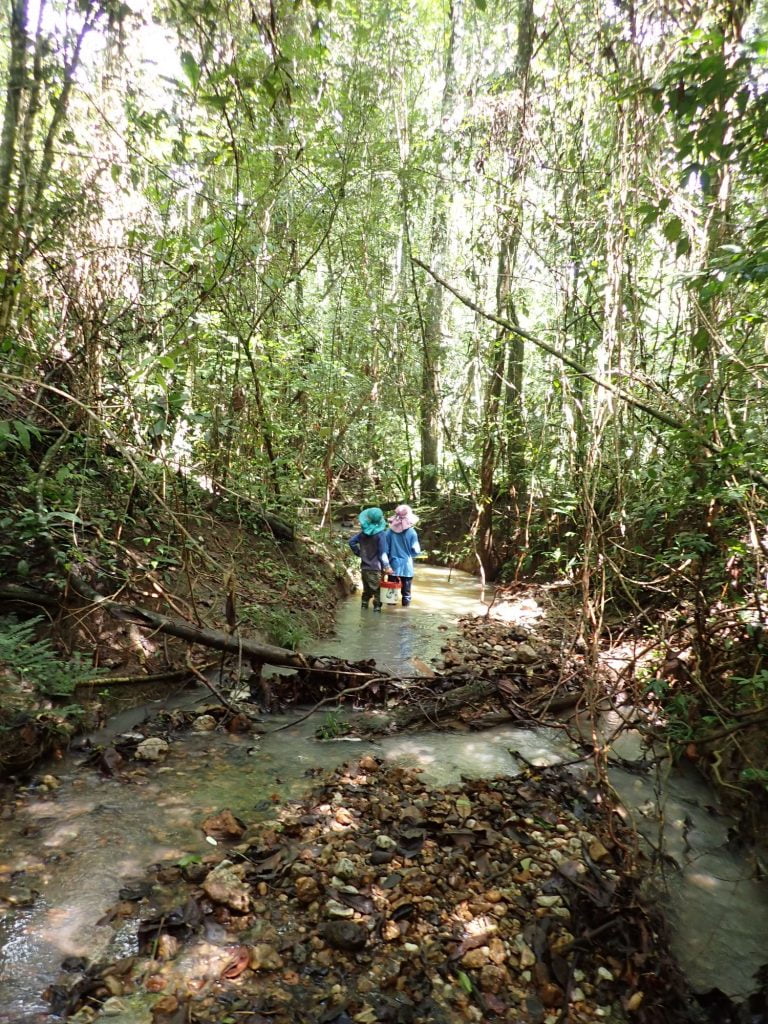
The plantation itself is mostly rubber, with some areas further from the house/main marina site growing teak and cocoa. Eugenio explained the process of growing and processing rubber to us, and on our walks, we enjoyed watching the men work on the plantation, examining the rubber as it pooled in collection pots, and collecting stray lumps, or cakes, of rubber that fell from sacks carried by the tractor and trailer before being transported away. Overall, I think we actually enjoyed our walks through the plantation more than the rainforest- it was a very different atmosphere, quieter (less bird and insect chatter), less humid and mosquito-y, and the light dappled beautifully through the leaves on the trees. The boys also loved playing in the muddy puddles that formed in the tracks from the ATV! The house itself was surrounded by the rubber trees, and when the seed pods matured, they would pop open with a loud ‘crack’, firing the seeds in all directions. A great lesson in seed dispersal!
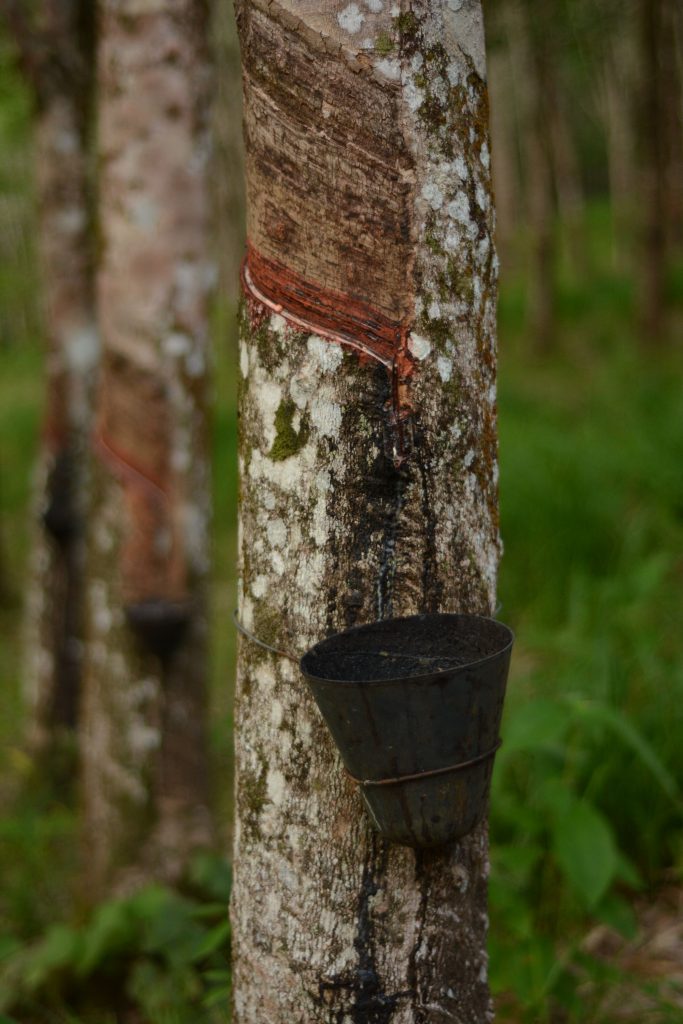
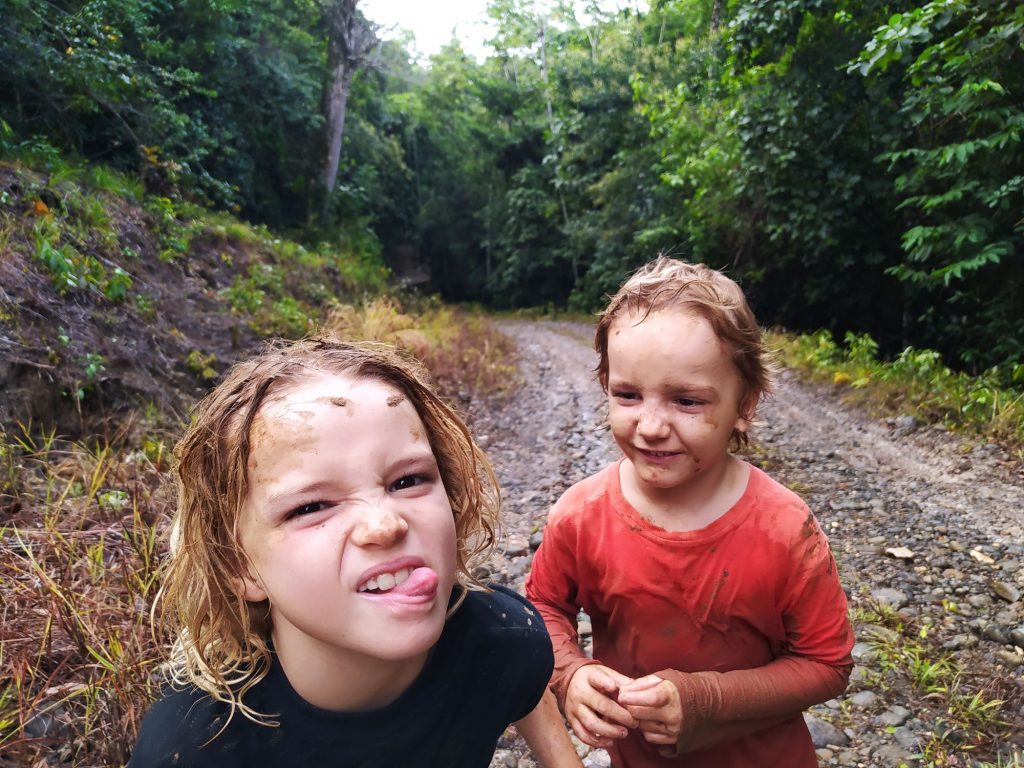
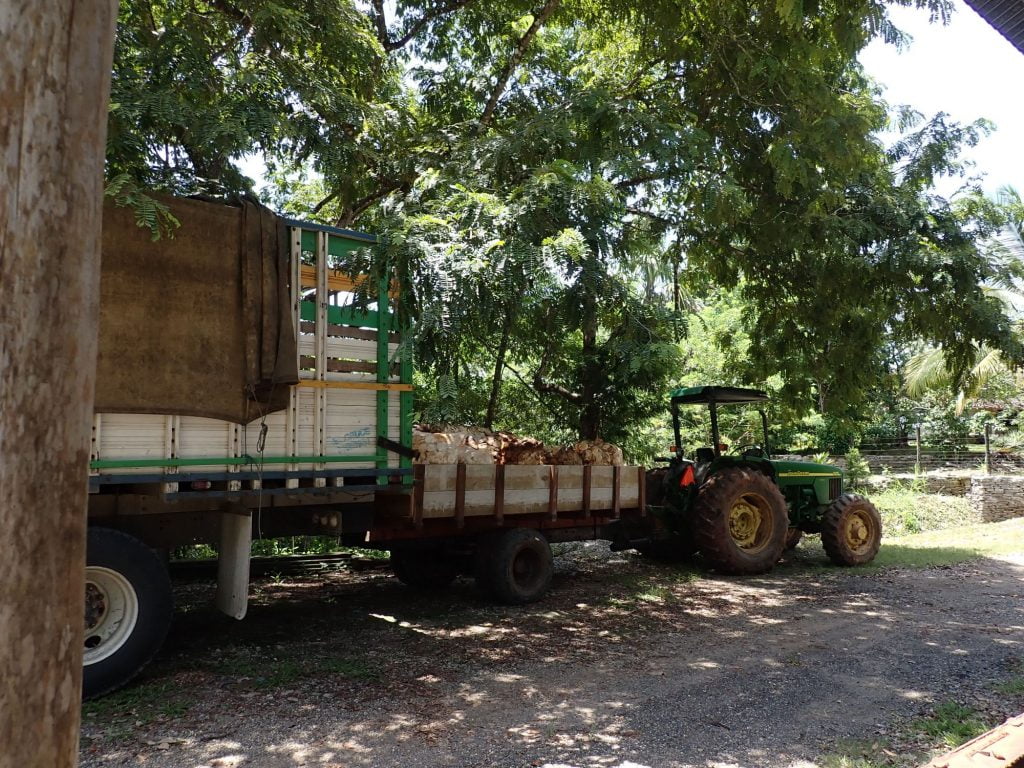
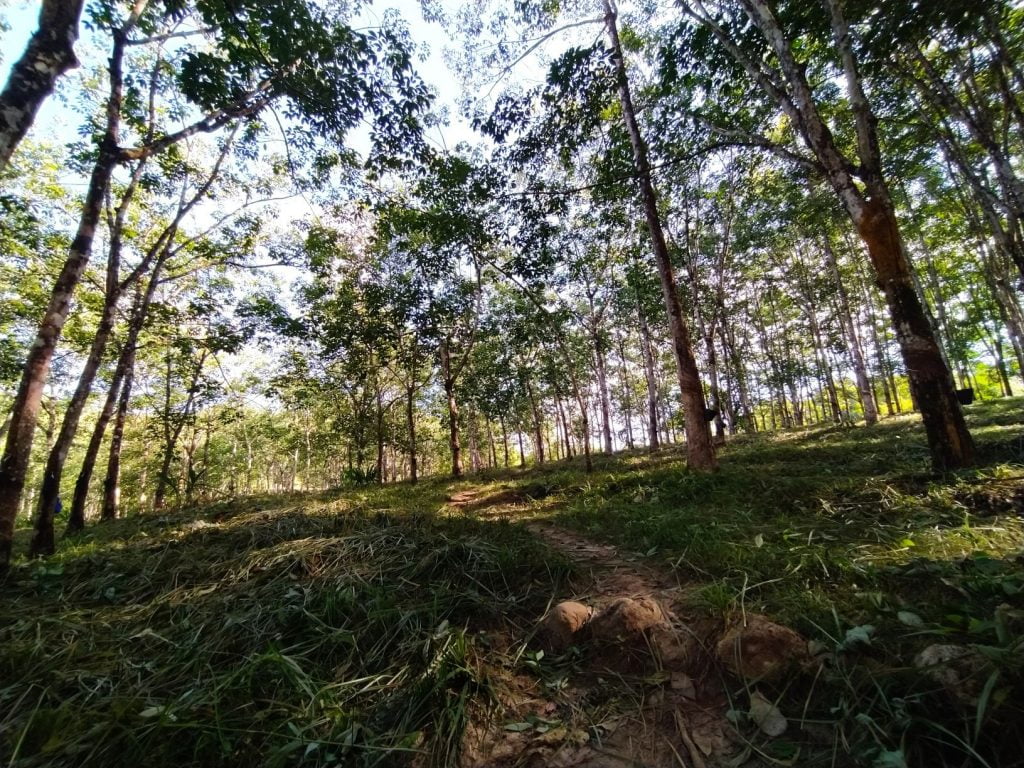
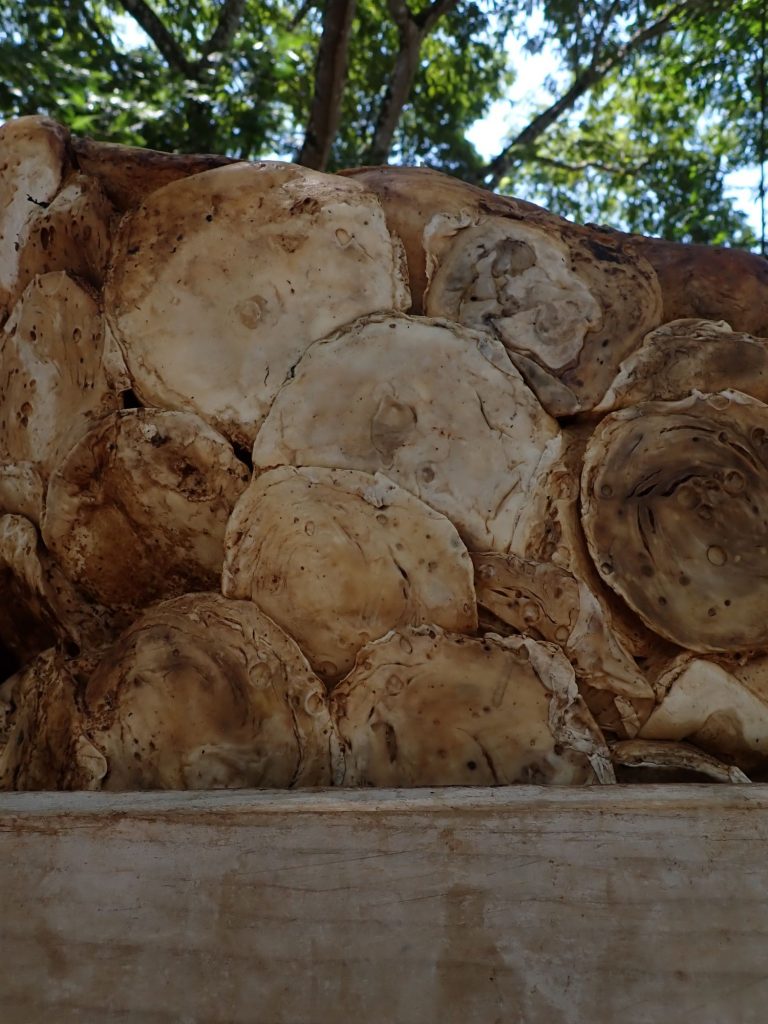

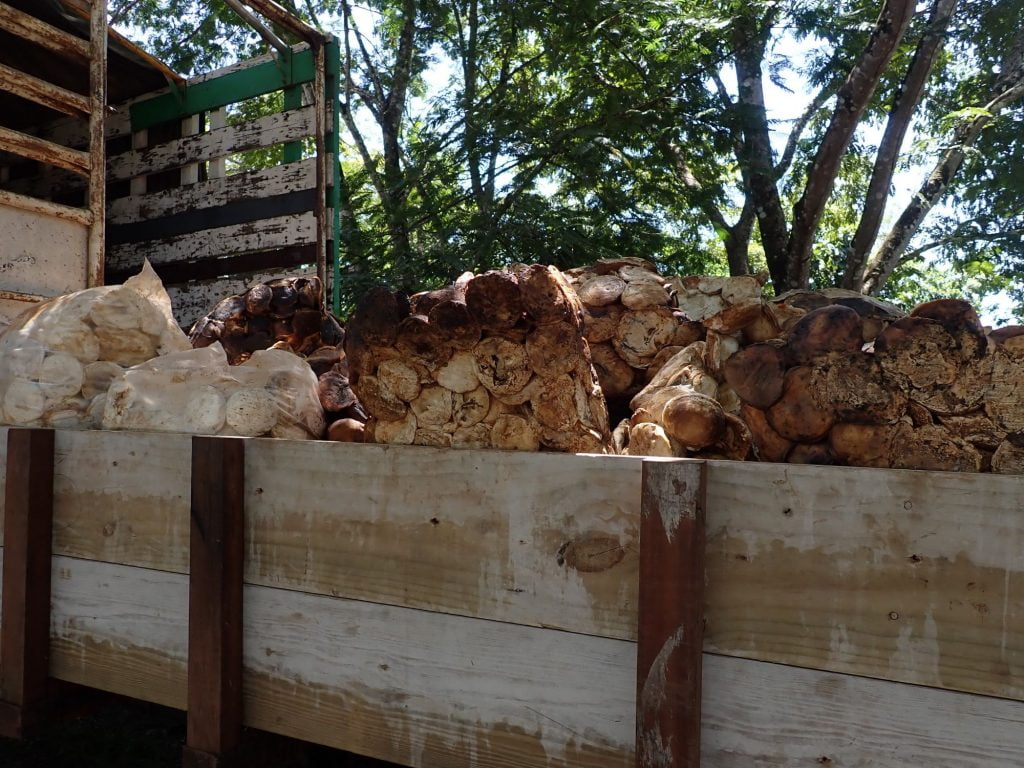
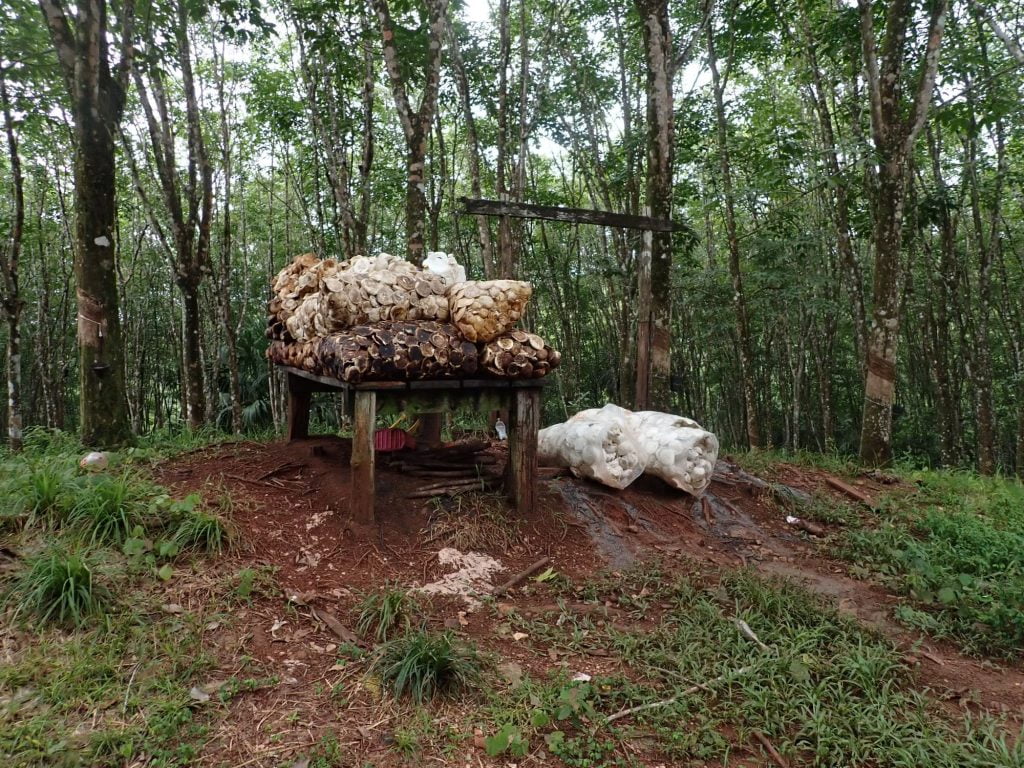
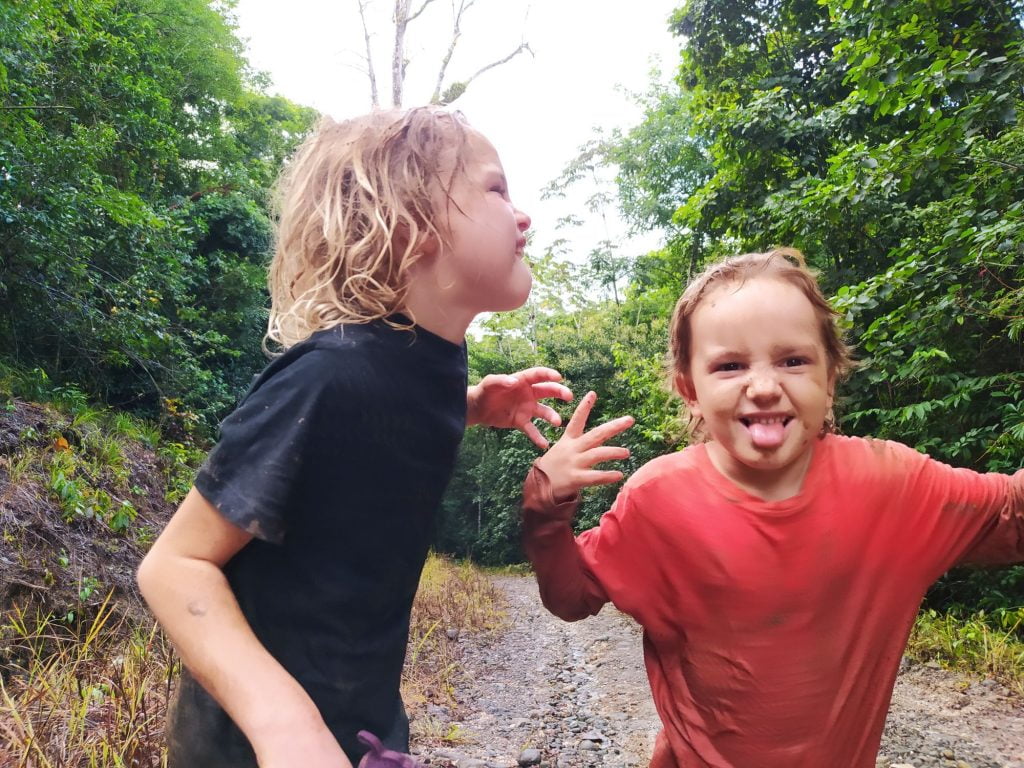
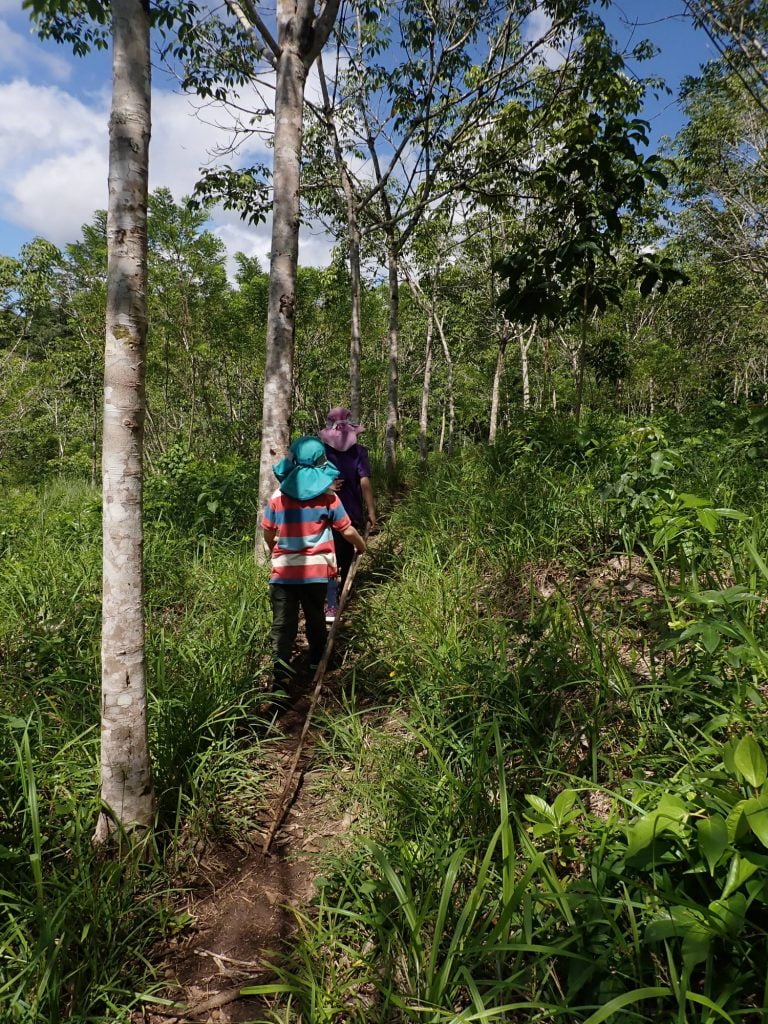
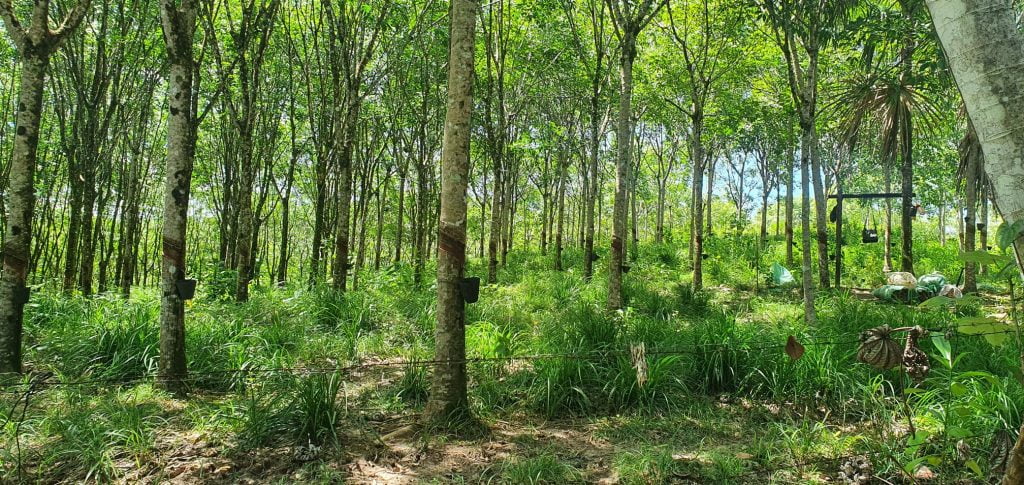
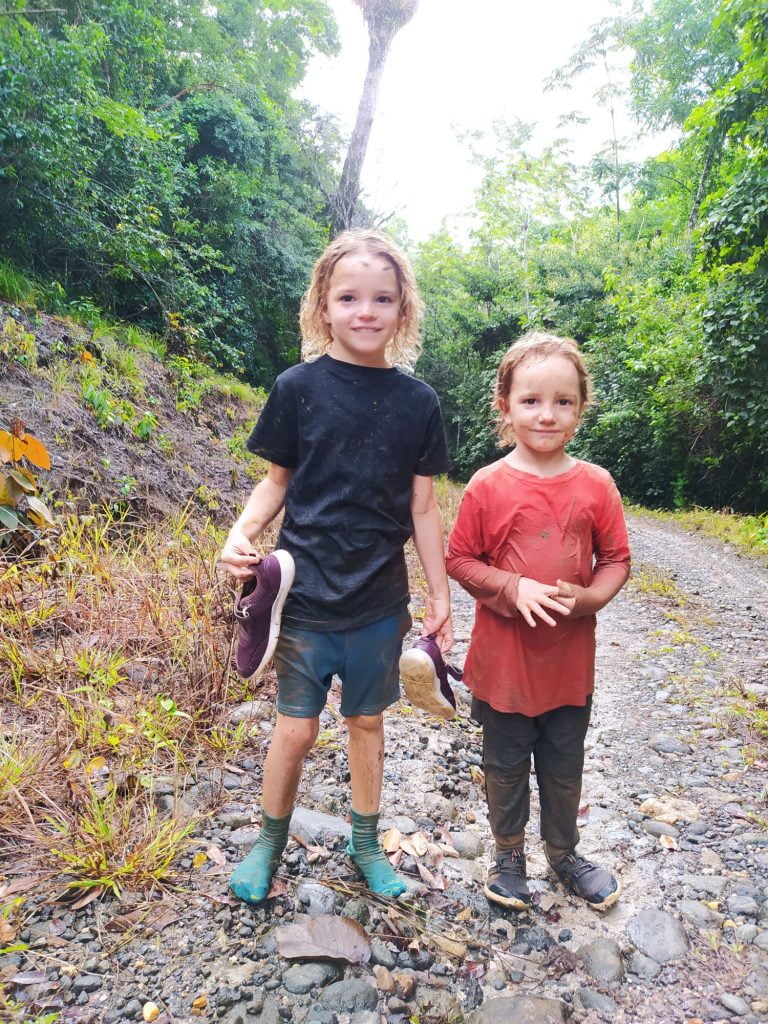
A few days after we moved in, we returned to NanaJuana to oversee Humpback being hauled out into the boat yard. This is always a nerve-wracking experience, but we felt happier with the technique used here- a trailer with hydraulic jacks to support the boat- rather than the hoist and slings used in Arrecife and many other yards. Edgar, the dock master at NanaJuana, donned his swimming mask and was in and out of the water to oversee the haul out, checking the jacks were positioned correctly in relation to the strongest parts of the boat structure. Arthur even got in on the action, catching and tying on lines thrown by Edgar’s team to ensure the boat entered the ramp straight. Once out and positioned in the yard, work could start on the interior refit we had planned, and on maintainace/checks below the waterline that can’t be done in the water.
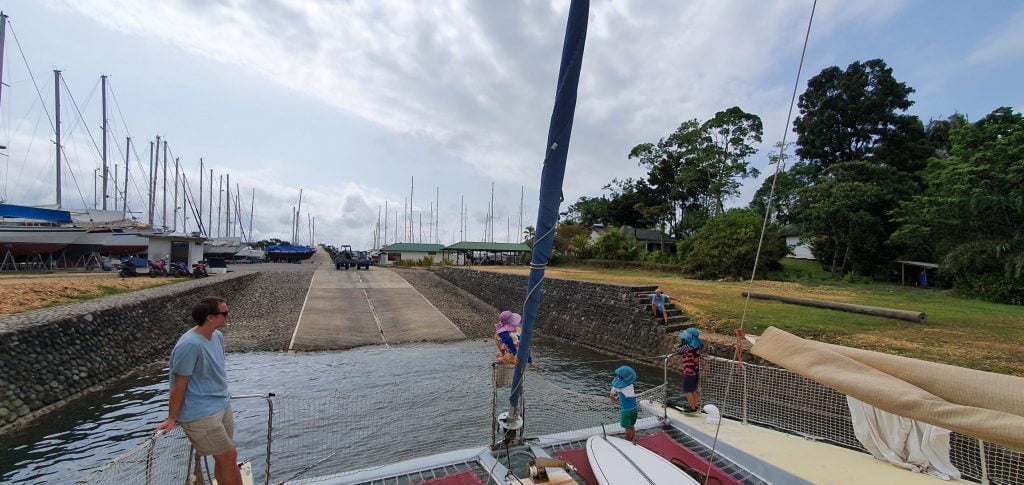
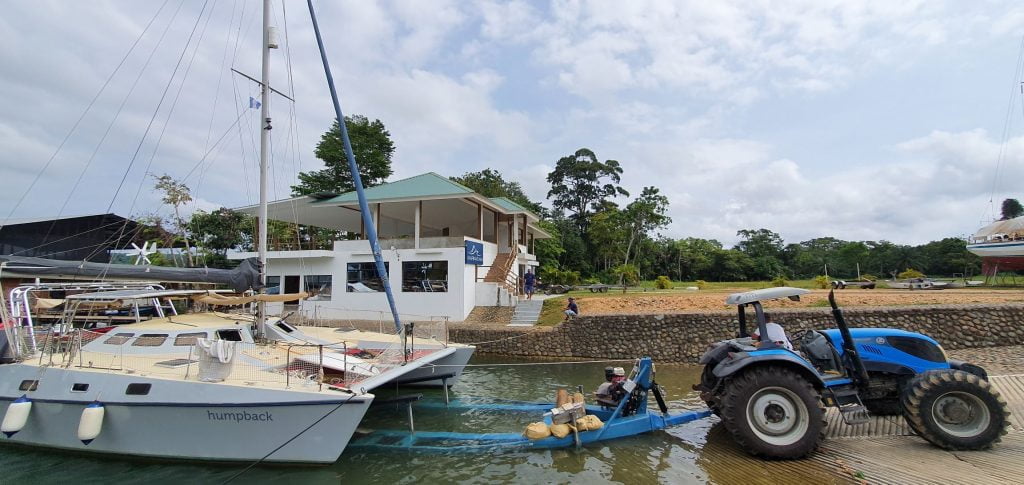
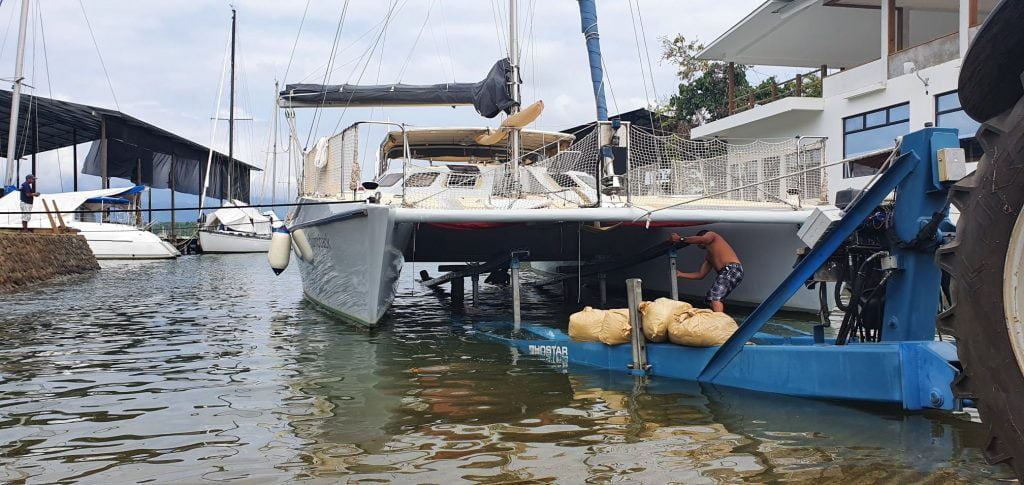

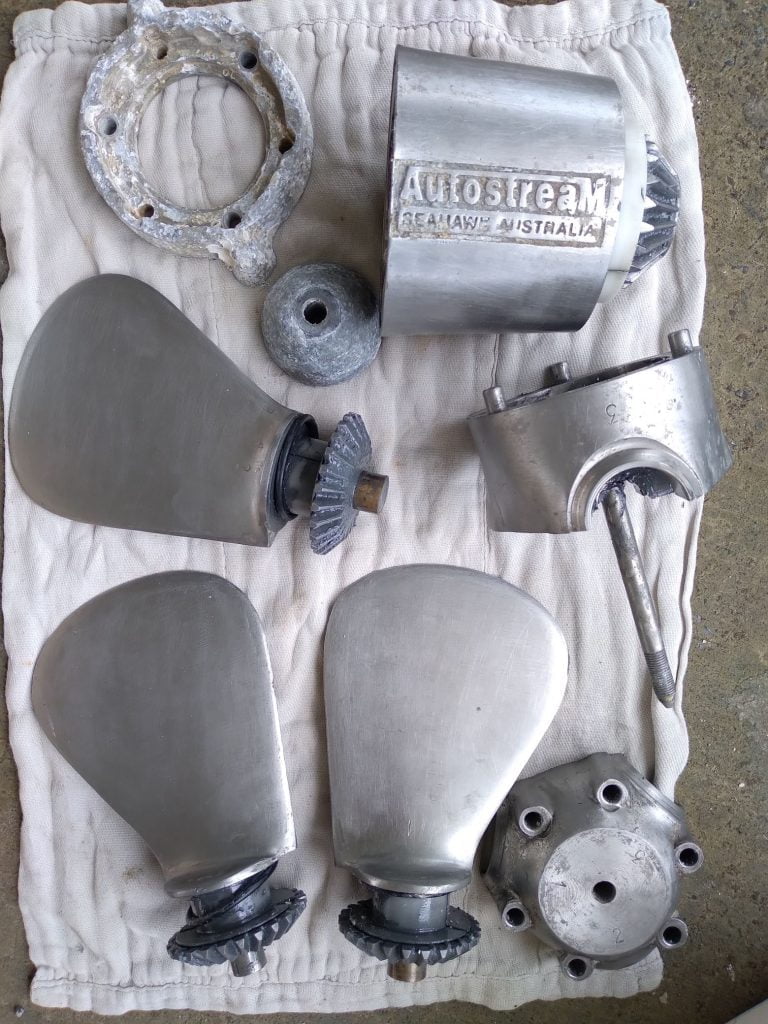

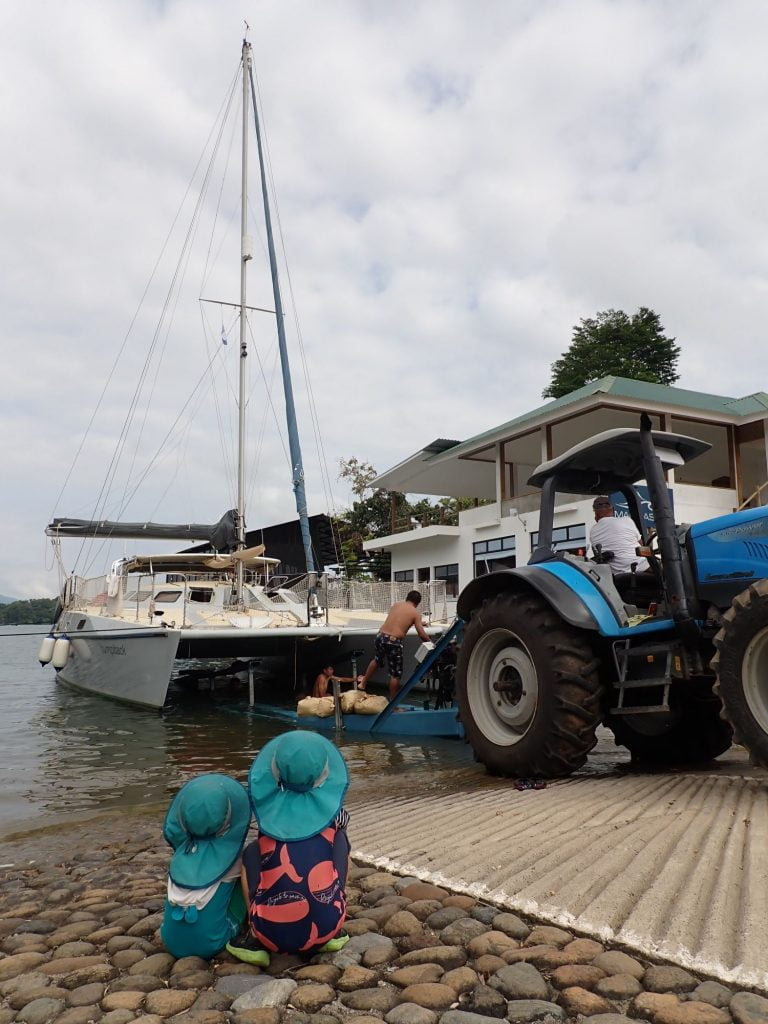

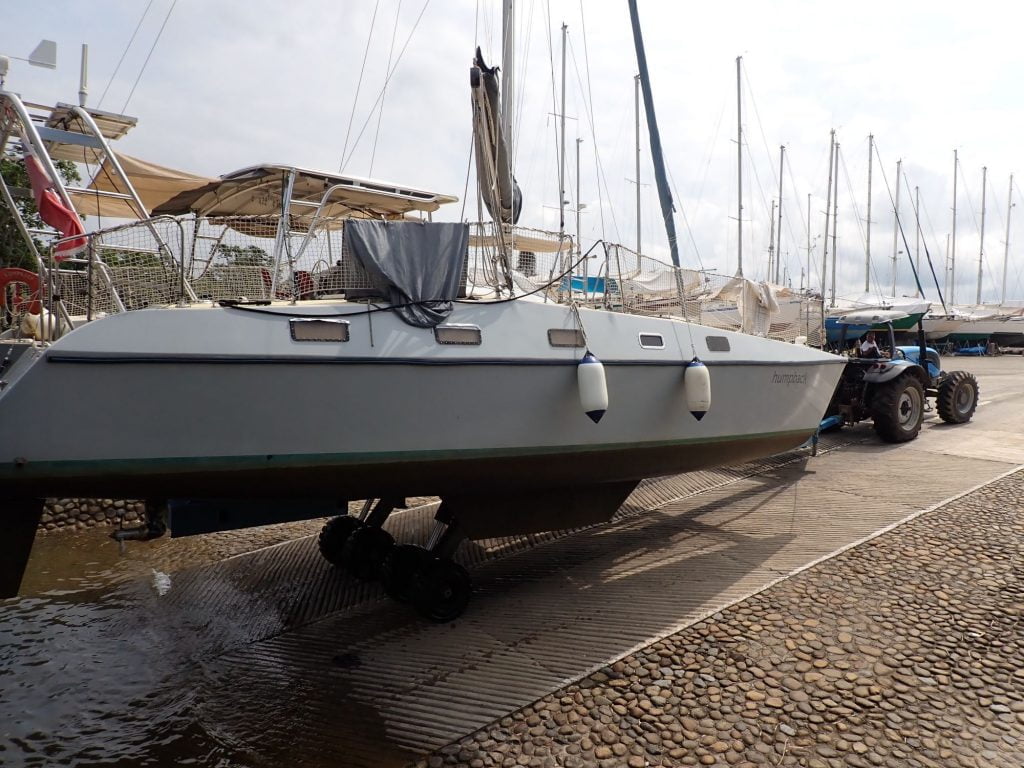
We celebrated both Arthur and Theo’s birthdays’ while staying at Tijax. It was good to have lots of open space to create and set up pinatas, or in Theo’s case, an exploding volcano, complete with wise and unwise volcanologists. Arthur chose to go fishing at the marina for his birthday, and not long after this, we started to allow him to walk the 15-minute trail down to the docks from the house and back alone so that he could fish when we weren’t all available or keen to go, taking a walkie-talkie in case we needed to chat. Theo chose to go pony-trekking through the plantation for his birthday. It was his first time on a horse, and since the other two boys didn’t want to go, it was a welcome chance for me and Theo to spend some time just the two of us. He really loved the horses and the whole experience- it was an especially peaceful way to see the overall Tijax site, and our guide was excellent, especially given that we could only communicate through my broken Spanish.
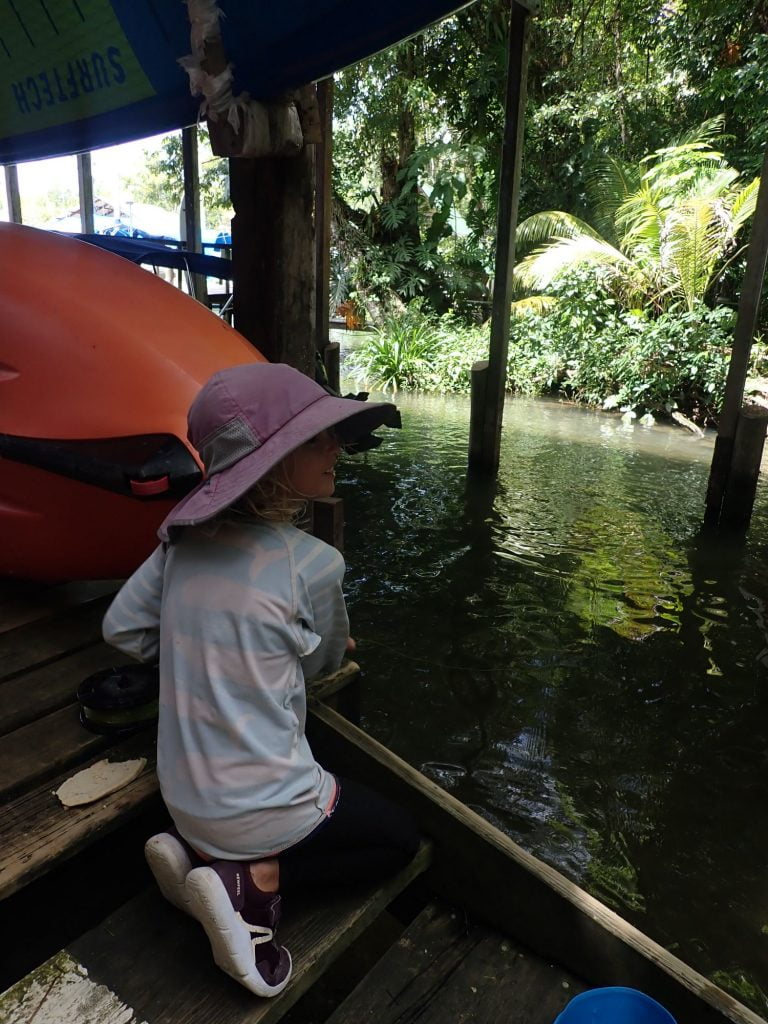
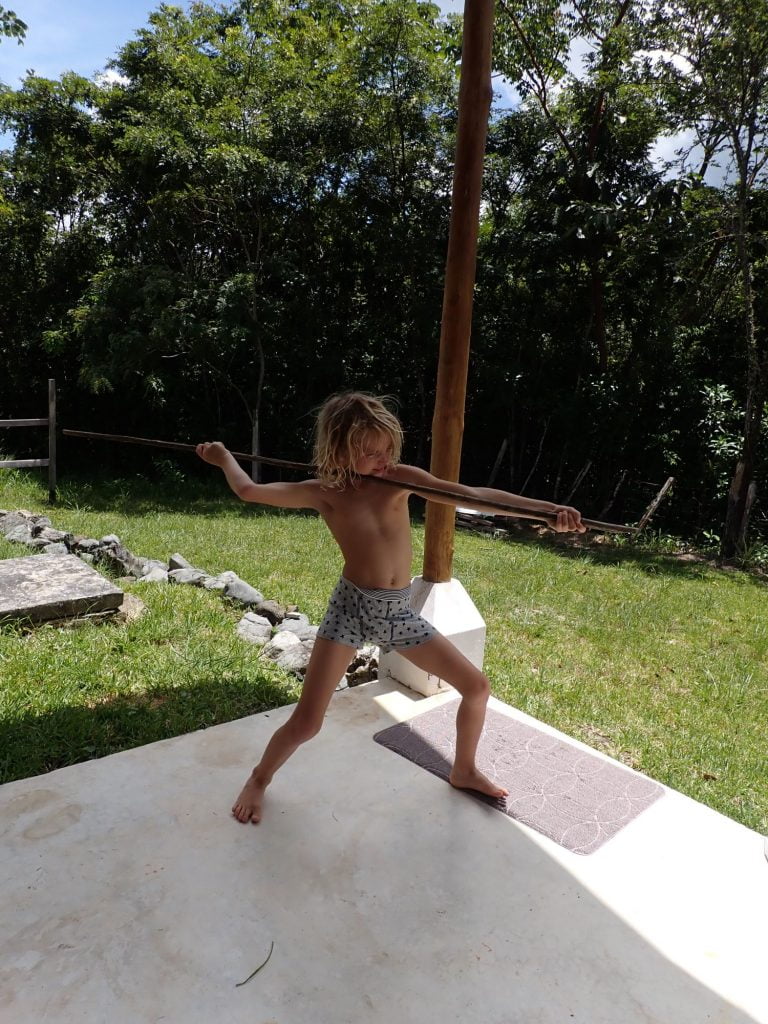
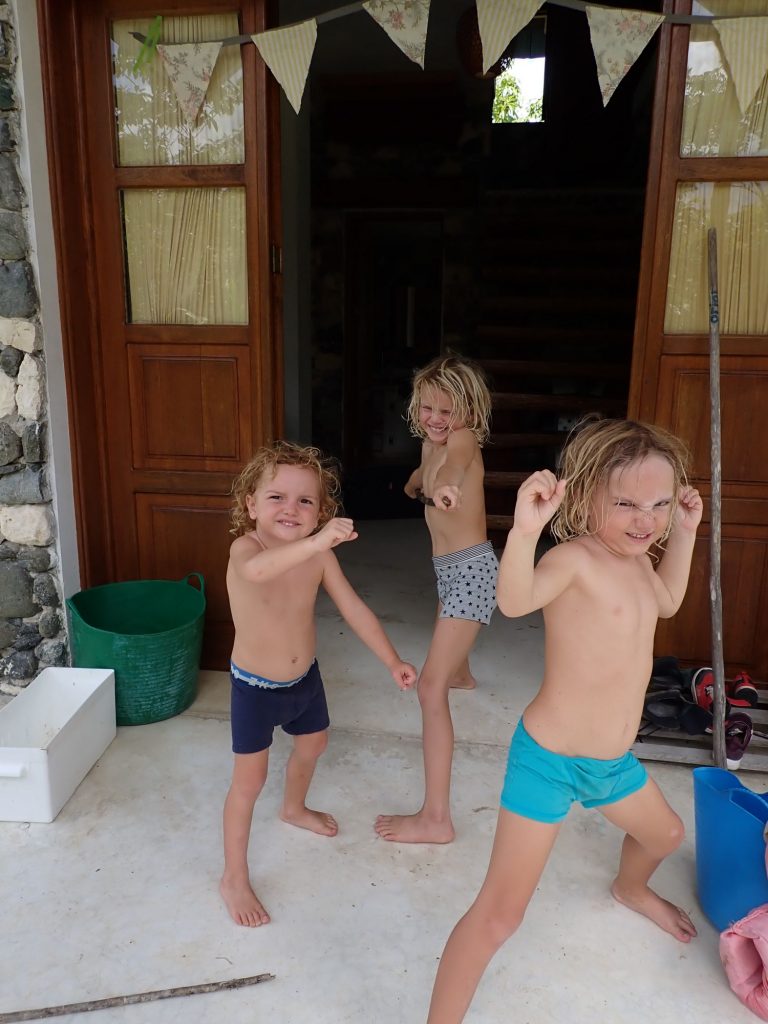
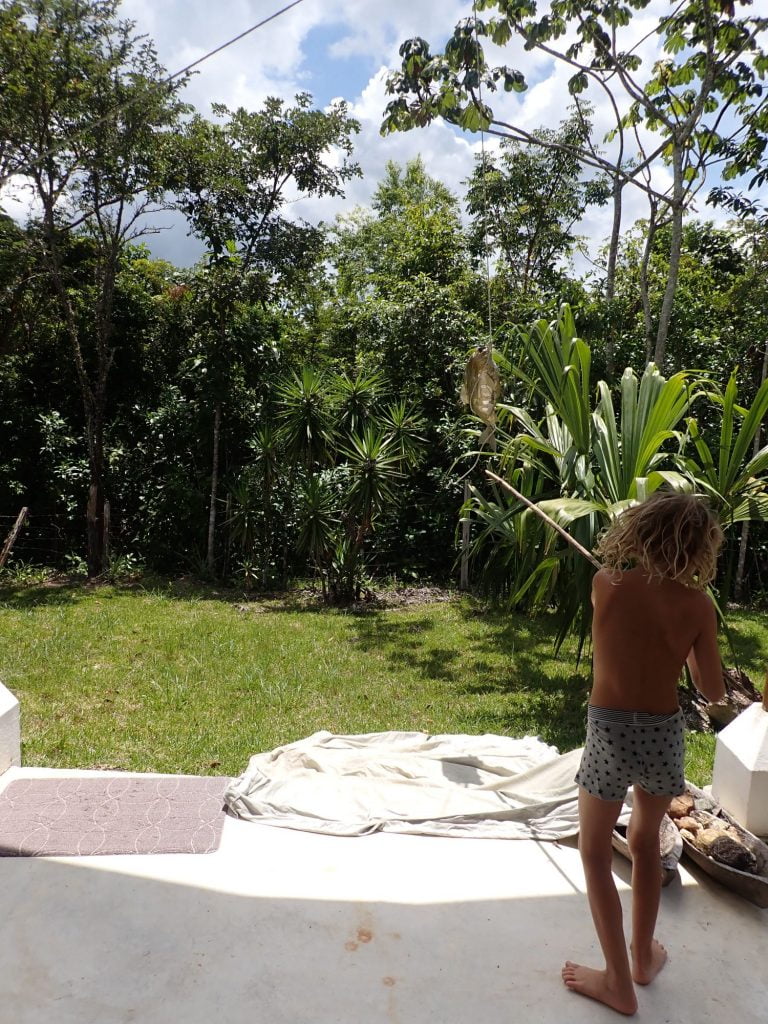
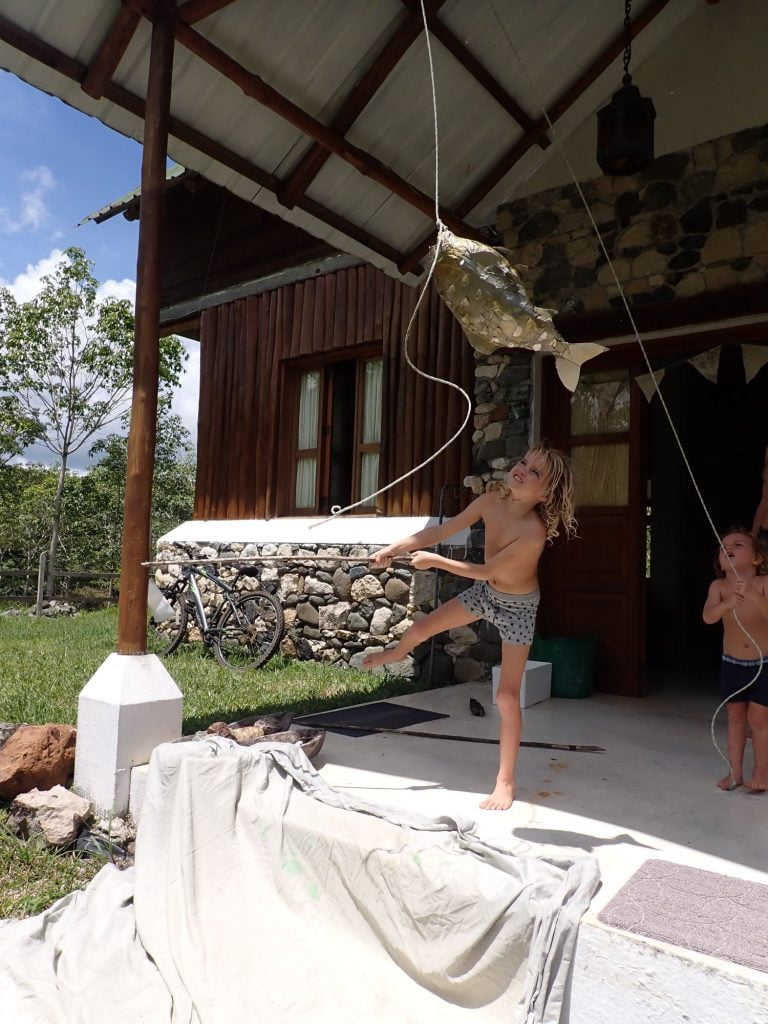
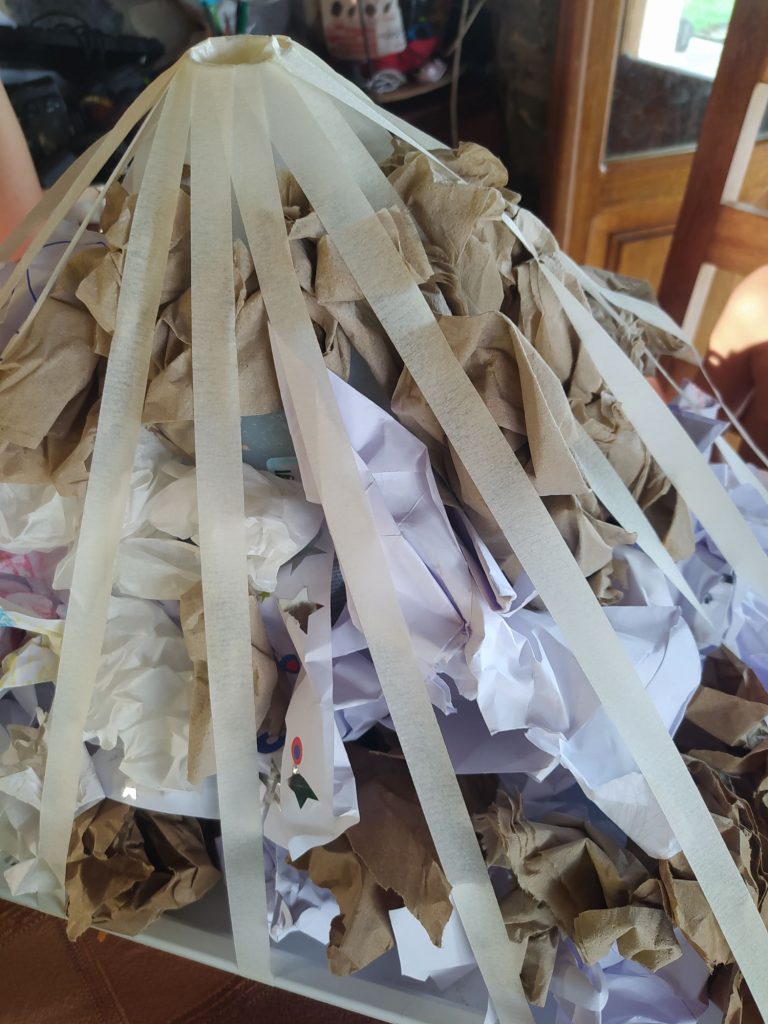
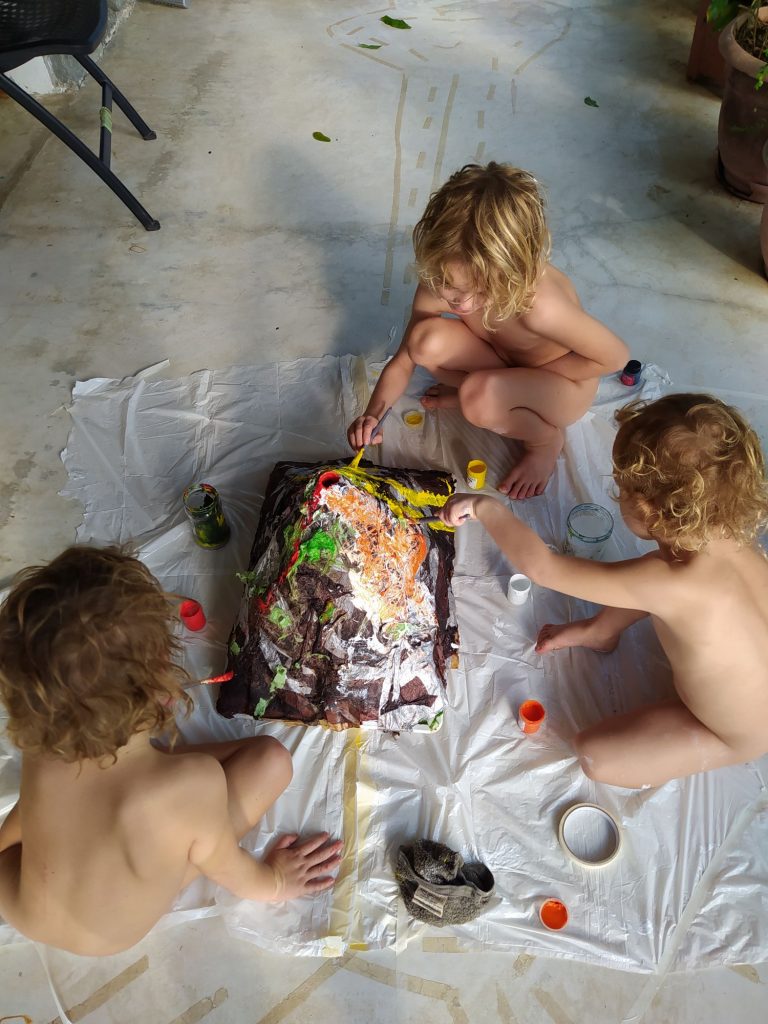
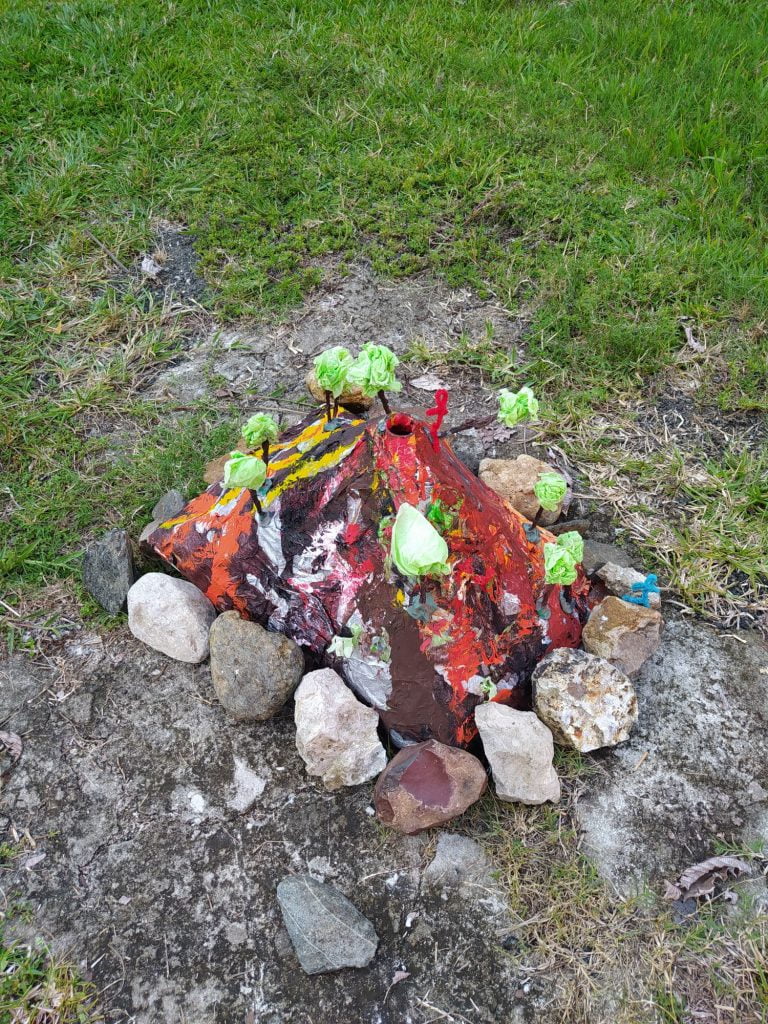


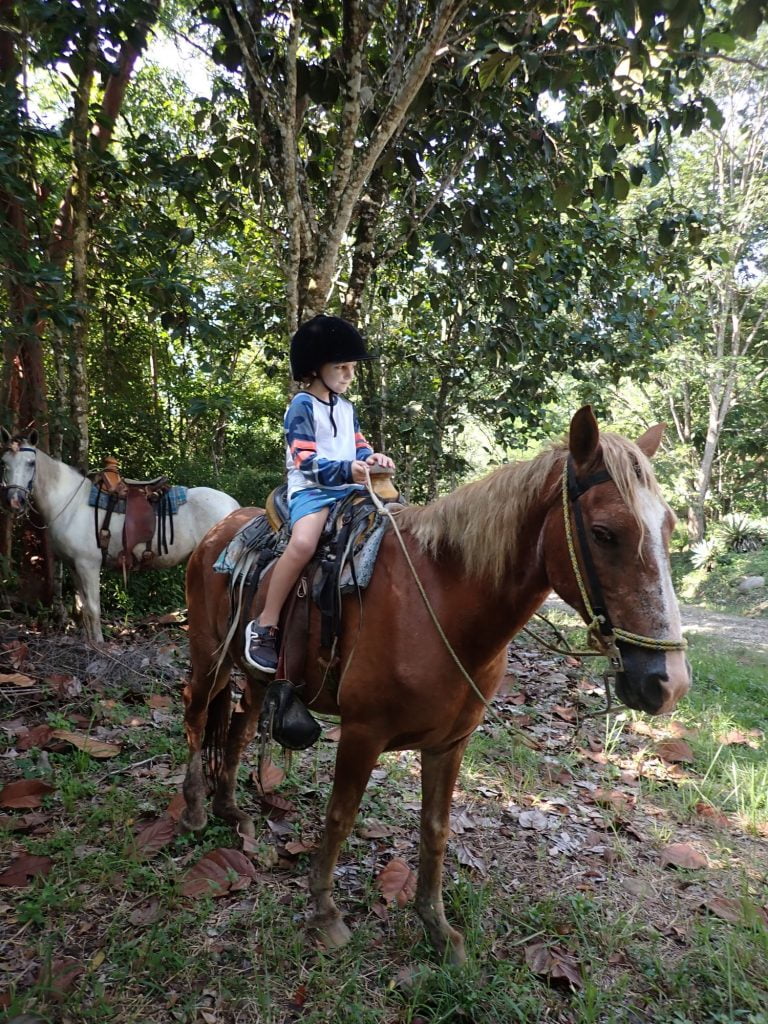
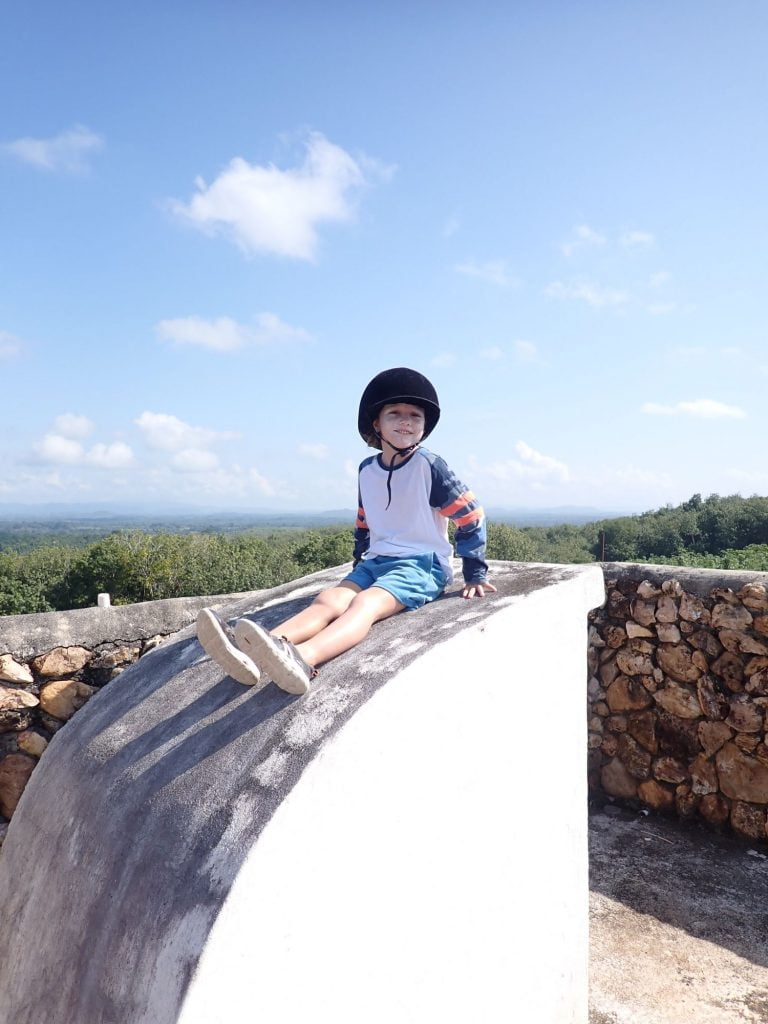
There was a big Halloween celebration for the kids (and adults!), with competitions, activities and prizes at various marinas around the river, with everyone dinghying between each base. As well as costumes, we made a ‘Trick Box’, with flaps hiding bowls of spagetti, grapes and jelly for people to feel and identify. Unfortunately, Theo wasn’t feeling well that morning, so Arthur and Hector got dressed up and we headed off for a long and exciting day, ending it with an unforgettable siting of the Tijax crocodile, which up until then only Theo had seen. The croc glided towards where Hector and I were waitingonn the walkway for Arthur, so silently that we didn’t notice him until he was pretty much right in front of us, then perched with his head slightly raised out of the water just watching. It’s easy to see why these animals are such formidable predators, they look so much like logs or debris when still, and can move with surprising grace and quietness. A friend said he saw one snatch an anteater close to the marina, dragging it down to the depths, so as you can guess, the kids were instructed not to swim or paddle anywhere in the area!
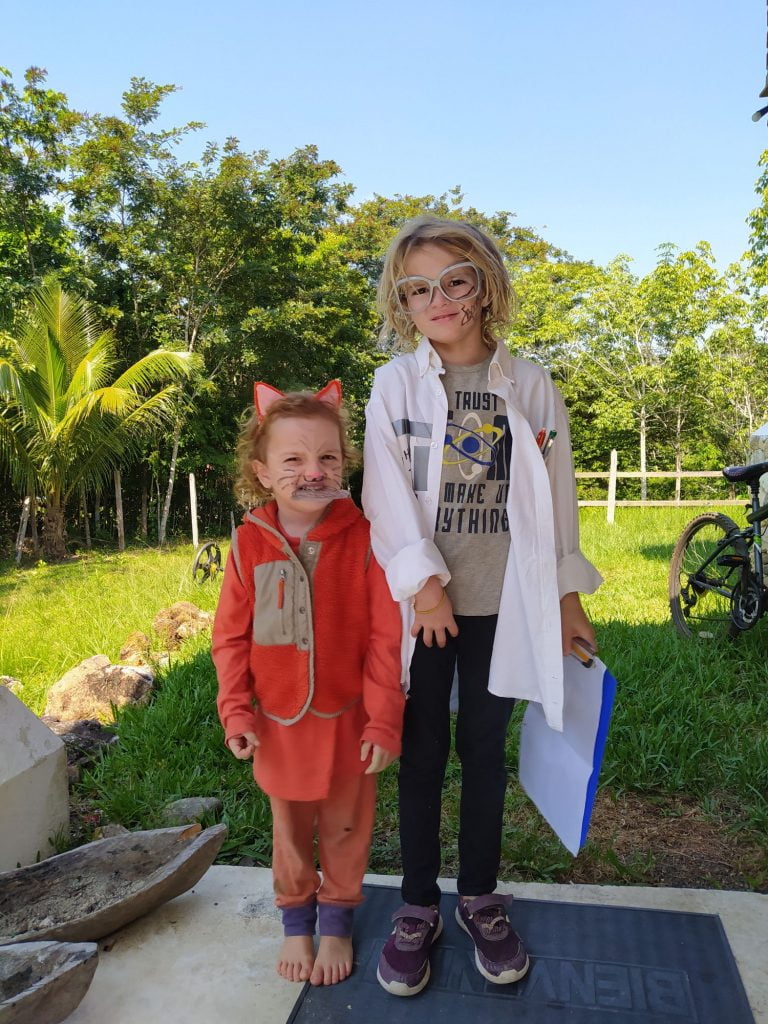

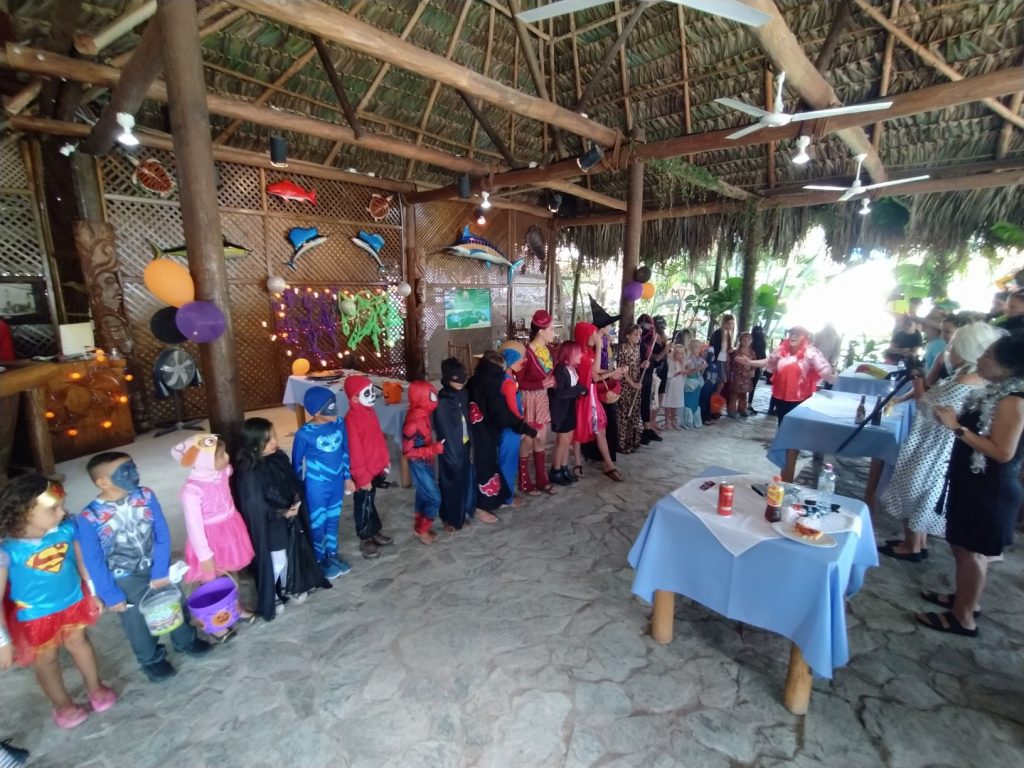
The rest of our time here was spent as normal- reading, painting, drawing, origami, Lego. The boys grew cucumbers, and invented a game in which they slid, naked (of course!), on the polished concrete patio soaked with bubbly water. Hours of fun, and not too many accidents. Dave spent his time divided between working on the boat and his own, paid work. I carried on twice weekly online Spanish lessons, and worked on the boat at times. Dave and I also tried to snap as many photos of the many birds that we saw in the gardens surrounding the house, as well as pictures of the various species of insect, spider, lizard, bat and scorpion (Dave found one climbing on his leg in the night) that frequented the house and garden. We visited a couple of local atractions, Finca El Paraíso hot waterfalls and Siete Altares waterfalls and pools, and went walking and river tubing at Seascacar, and walked the ‘Pipeline Walk’, which you can read about/see here (one day!). Oh, and we were lucky to befriend the farm dog, Pookie, who came over most days for a fuss and to chill with us, and even bought a tiny puppy with her one day, which the boys adored. Maybe one day, we could get a pet…
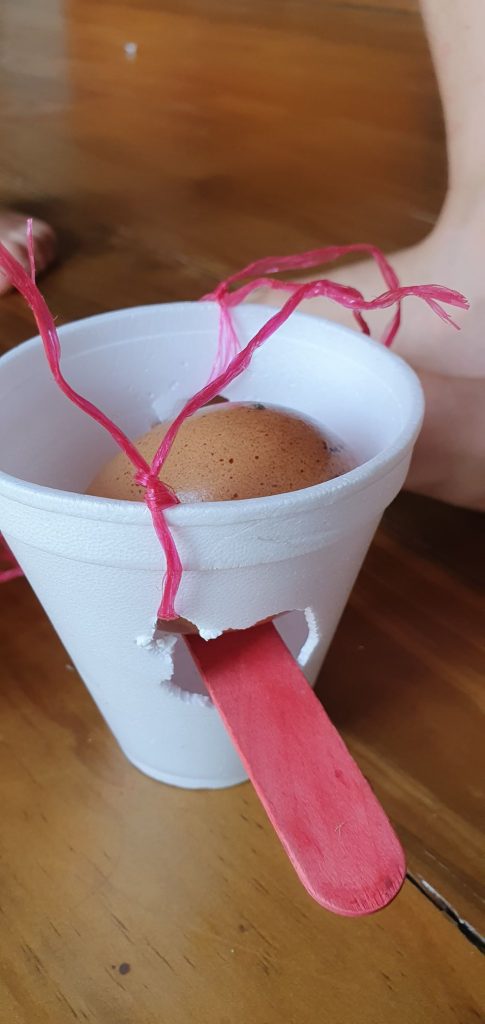
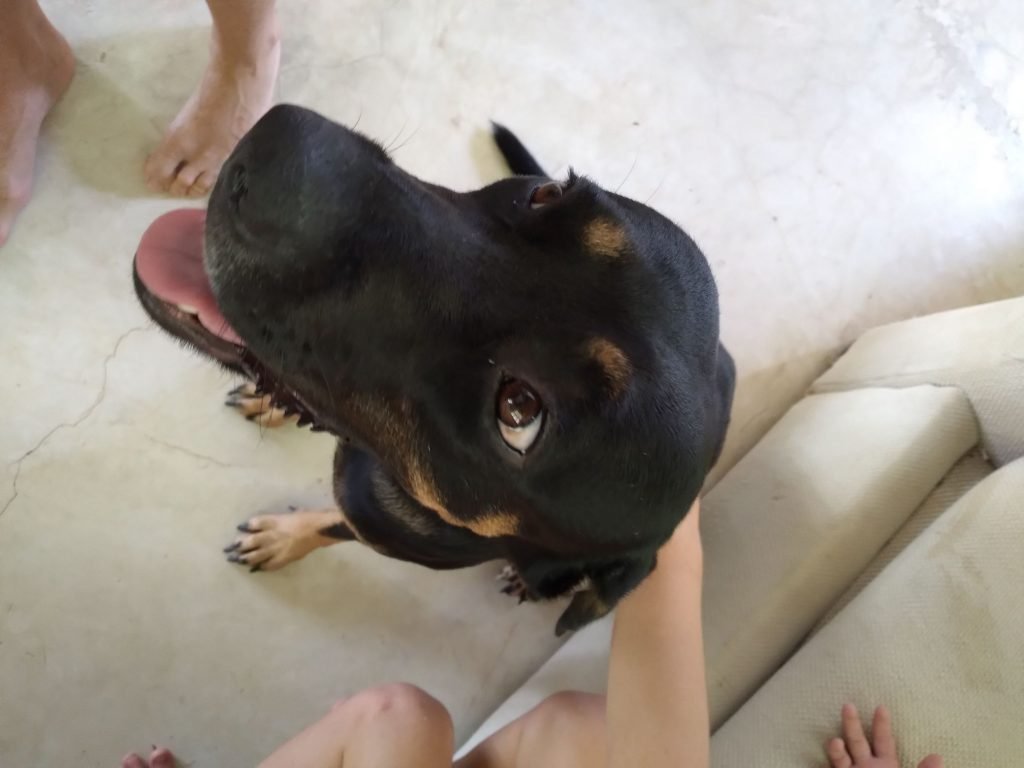
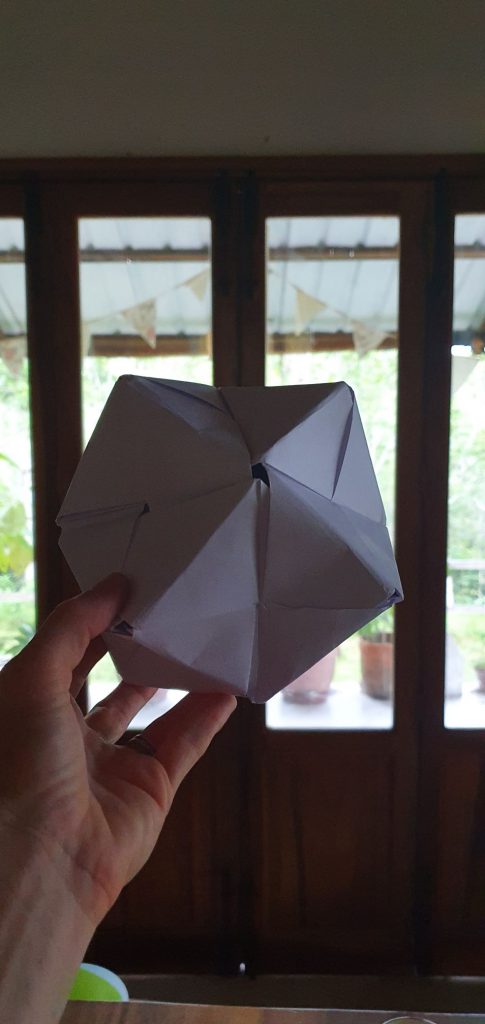

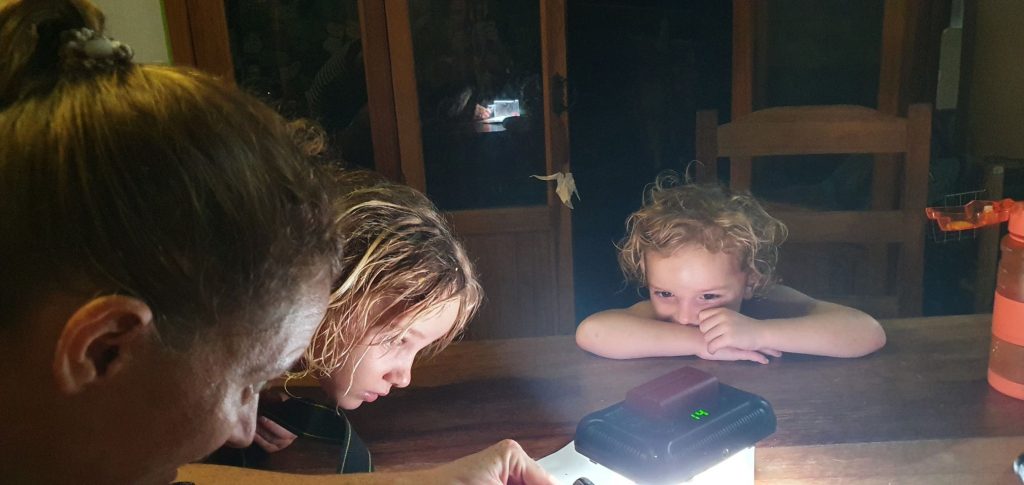

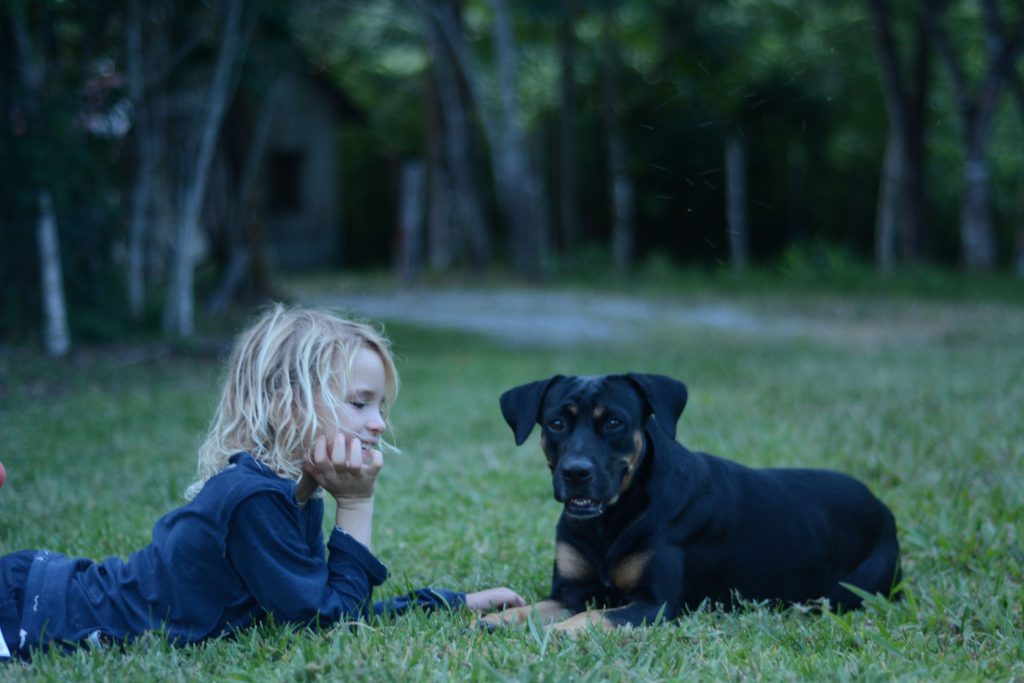


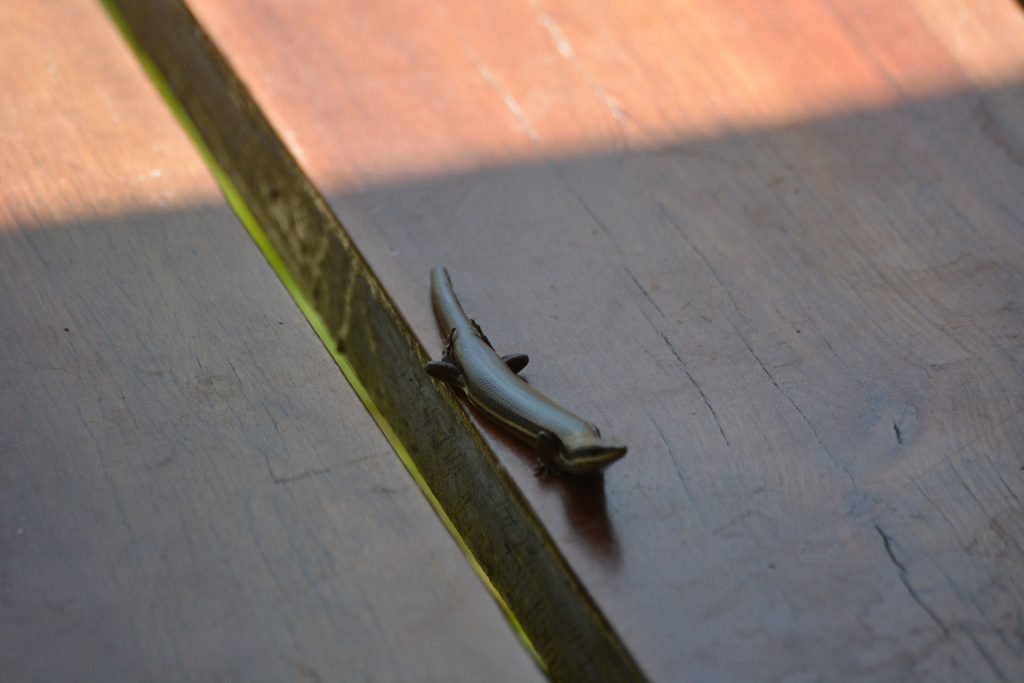
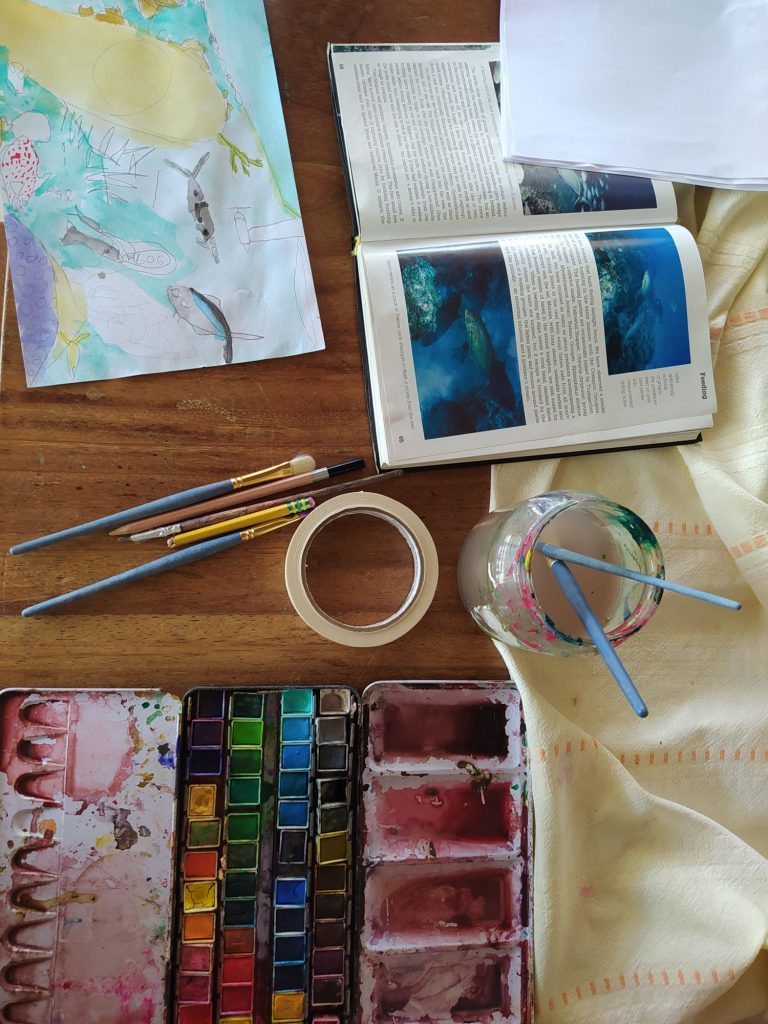
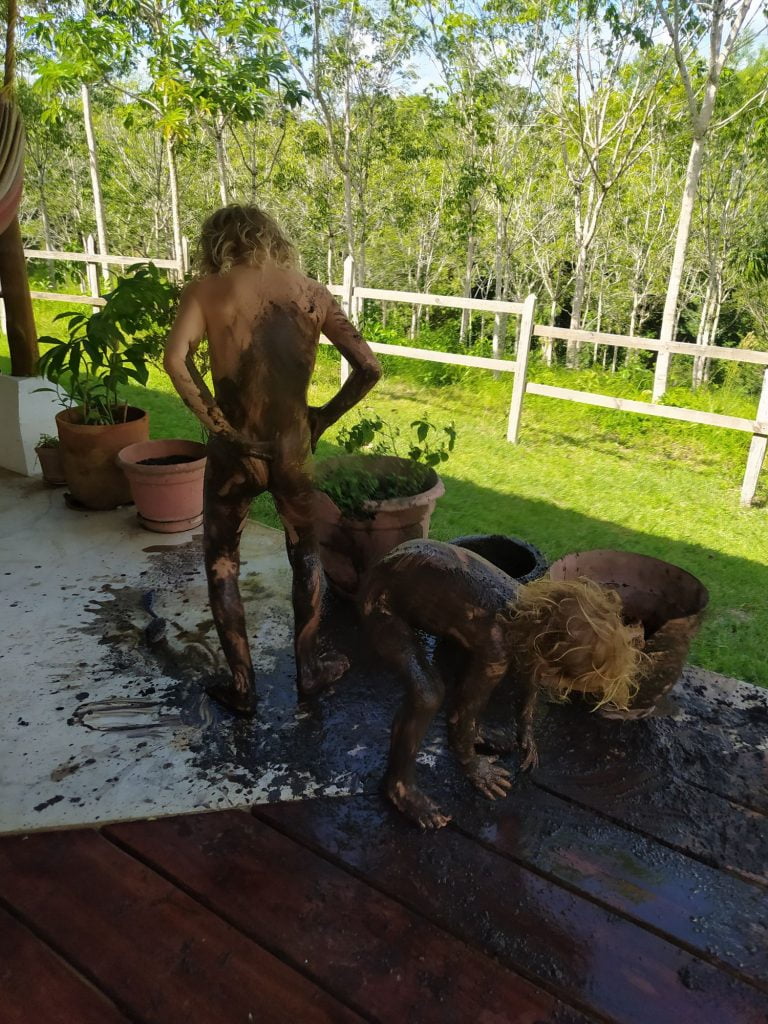
Dave and I recieved our first and second COVID vaccinations. I vistied the Mercado Nuevo, what I hear was planned to be a large, covered market but was never completed because the area is suspectible to flooding, to sign up, then a couple of weeks later, we were contacted to organise the first apppointments. We arrived at the concrete building, which resembles a small aircraft hanger, a little earlier than out alloted time, but the time must have been a guide as we were organised into a group with other people who arrived earlier and later than us. Despite snacks and books, the kids became quite frustrated by the convoluted process, which involved two or three people filling in the same information by hand in different ledgers, whilst another inputted this into a computer, but the vaccinations were free and administered quickly, albeit nealry two hours late. Needless to say, the boys weren’t keen to go with us for the second, but these were much quicker. It felt all the more complicated as the whole process was conducted in Spanish, but it’s done now and we were able to download certificates online as evidence for future travel (onec we figured out Dave’s date of birth had been inputted as down as June-Junio- rather than Jan).
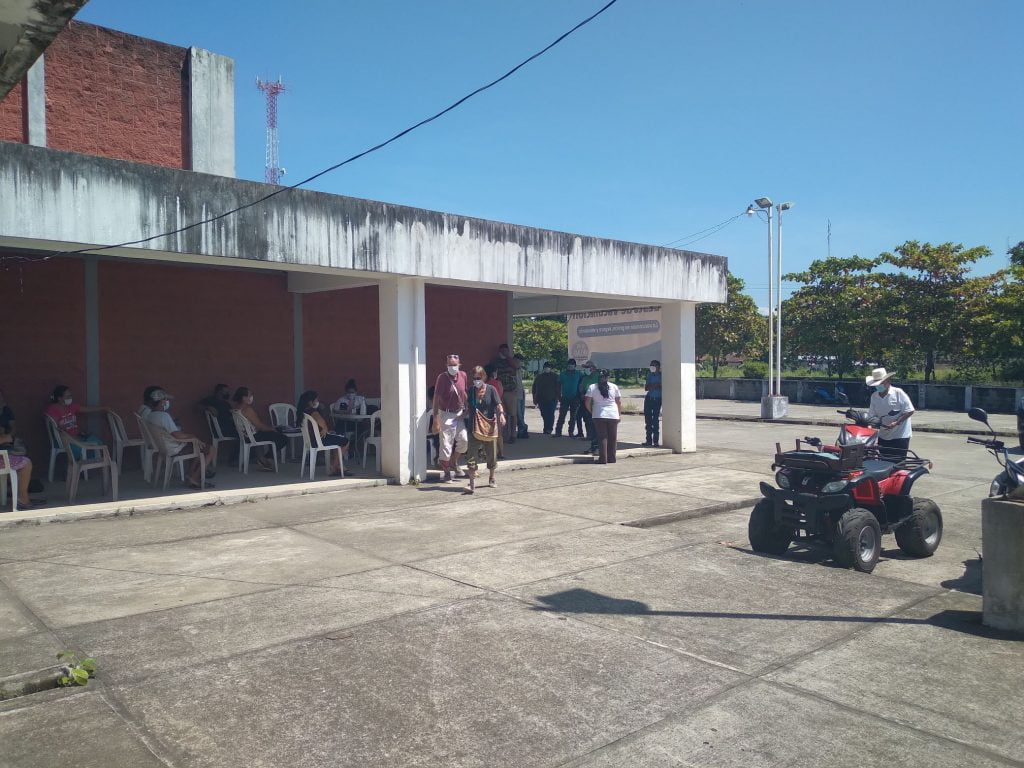
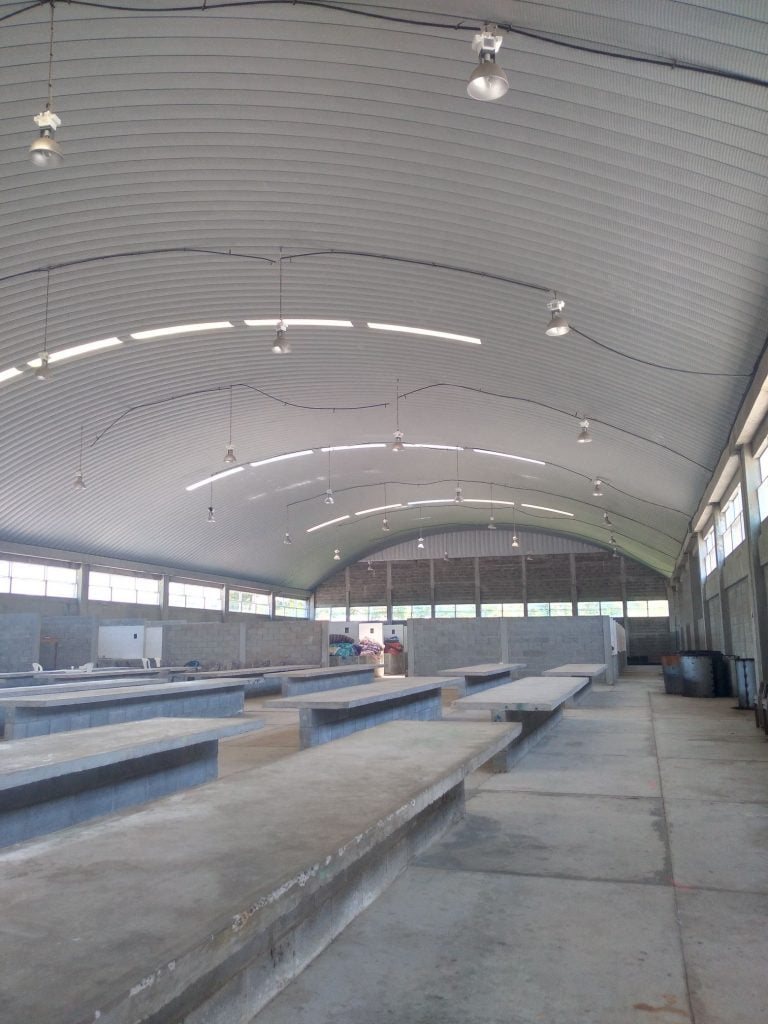
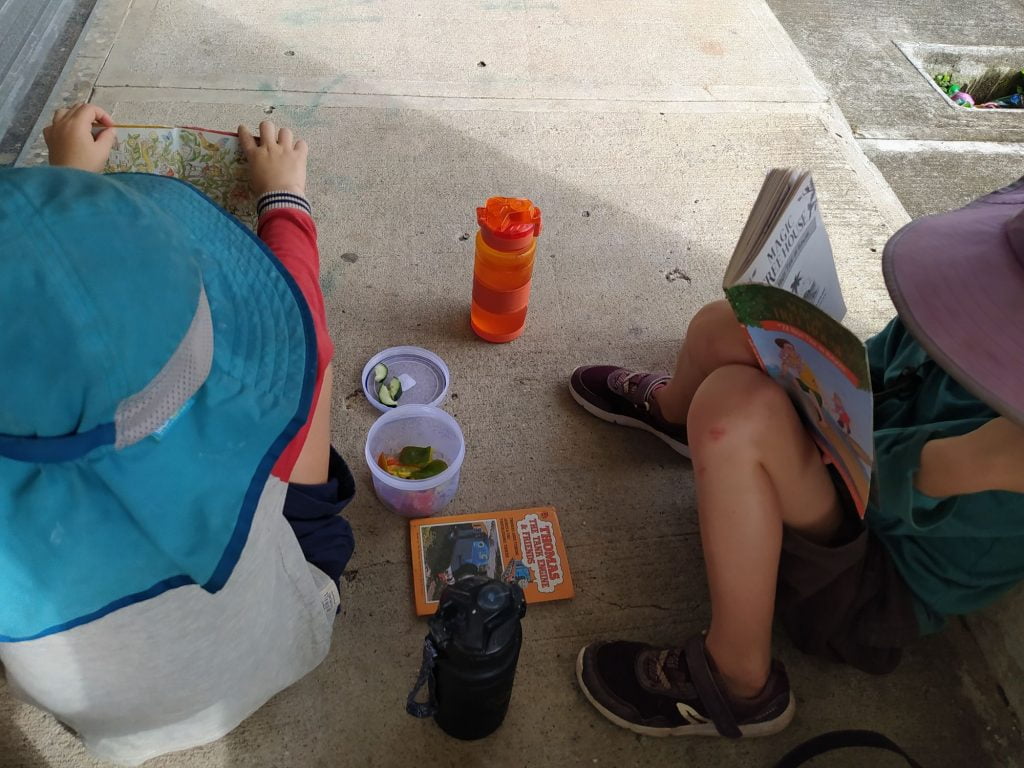
Theo started doing some children’s Spanish lessons once or twice each week, held in the afternoons at Tijax Marina and run by a wonderful lady who lives and works here, along with a friend of hers. Whilst he had his lesson, any kids not doing lessons (Hector a bit young, Arthur not interested) and their parents played at the poolside. Arthur also spent a lot of time fishing, alone or with the other kids. The Tijax cats appreciated his efforts!, and he came up with a logo for the fishing club he thought about starting. These afternoons were a good way to catch up with cruisers, and the kids always had fun. The evening walk back was lovely, though encountering a large, angry snake one time was a bit scary! Luckily, it leapt out of our path- yes, pretty much leapt in the air- before we had to consider pushing it aside with the stick Eugenio advised us to take with us on the tracks and trails. Some of snakes here are deadly.

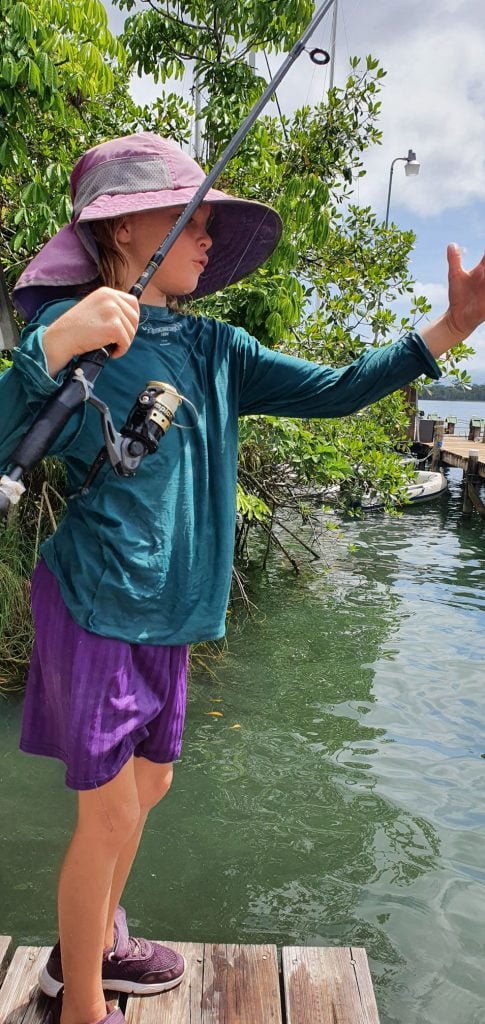
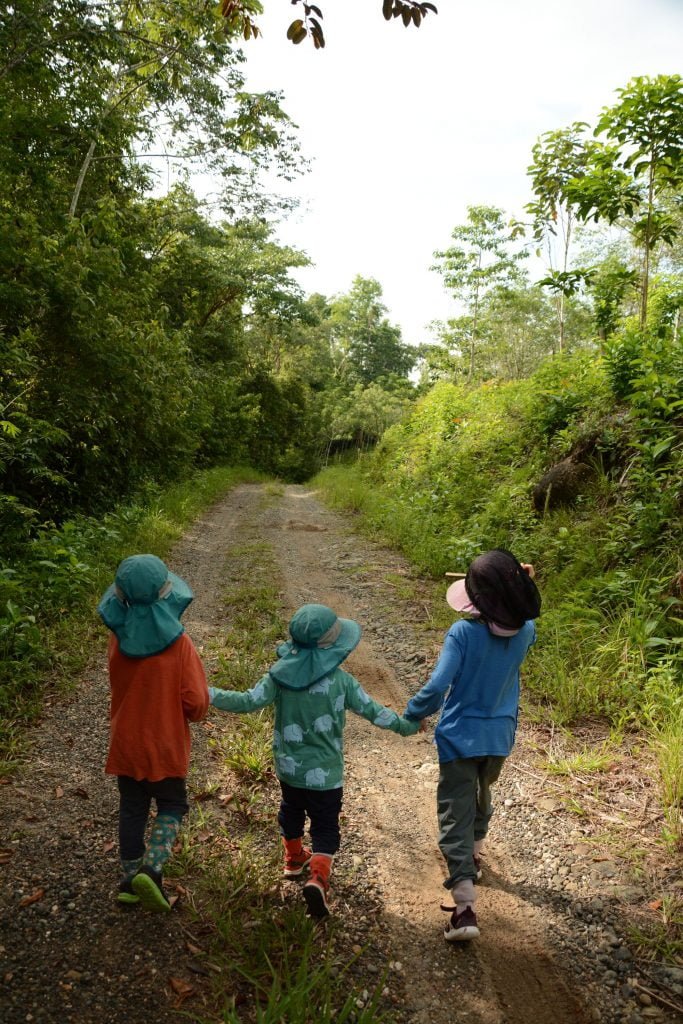
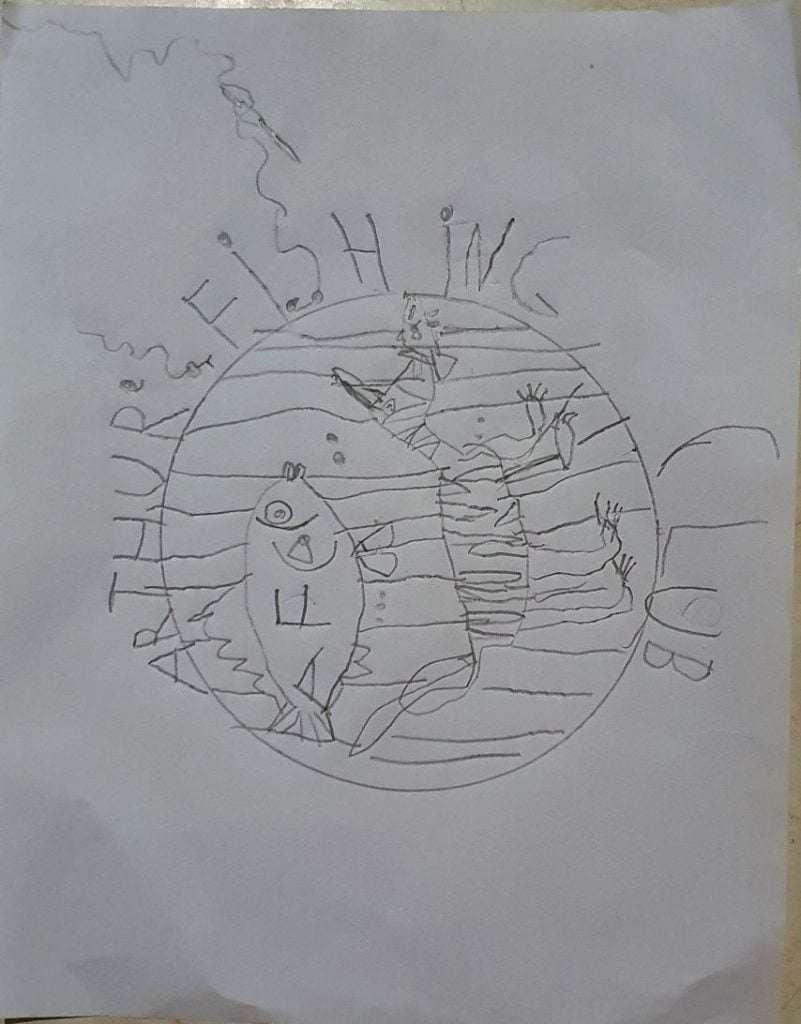
We were really keen to visit some of inland Guatemala whilst we were unable to sail, and as it was clear our boat wasn’t going to anywhere near completion by the end of our 3 months in the Tijax house, we spent some time planning a month’s road trip for December to Lake Atitlan and Antigua, with stops en route to break up the driving. Since we were struggling to find reasonably priced accommodation for the Rio in December, the thinking was that, by the time we returned in the new year, we would be able to either move onto the boat again or find somewhere for January, depending on progress. We were perhaps a little optimistic about moving back onbaord, but the road trip was amazing and well worth it!
